October 1, 2023
Martha O'Kennon
We had a few days last week in which the temperature got to the low 80's. The last couple of days it has been raining. It's hard to tell where any particular day will sit temperature-wise. The Japanese Anemones have been brilliant - they seem to be gaining some energy - I hope they can bank that till next year. The Asiatic Dayflowers are beginning to slow down their display, but the Asters (here you see the purple ones) are hardly flagging.
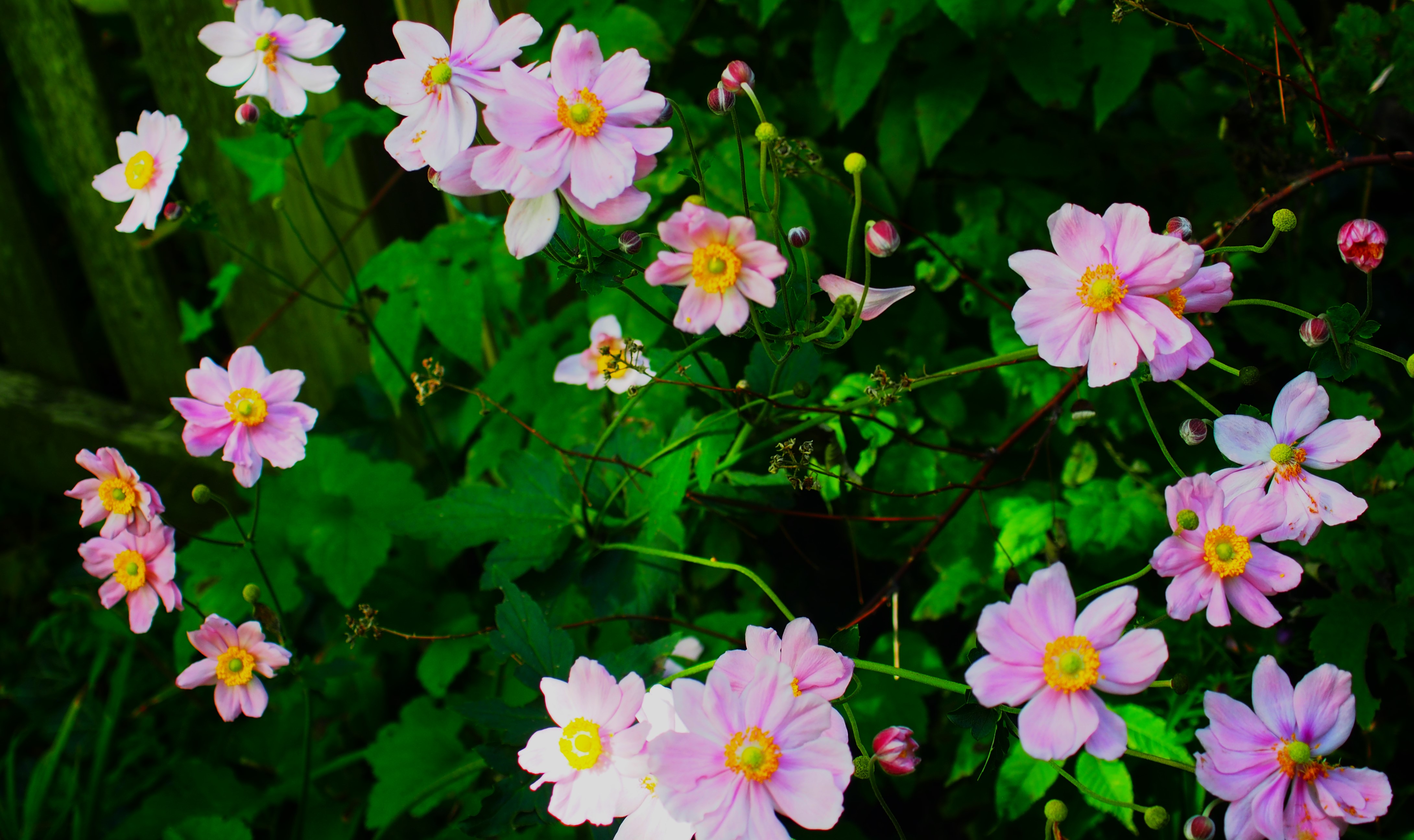

But the Browning of the Goldenrod is coming along too. In a few days there won't be much of that glorious yellow!
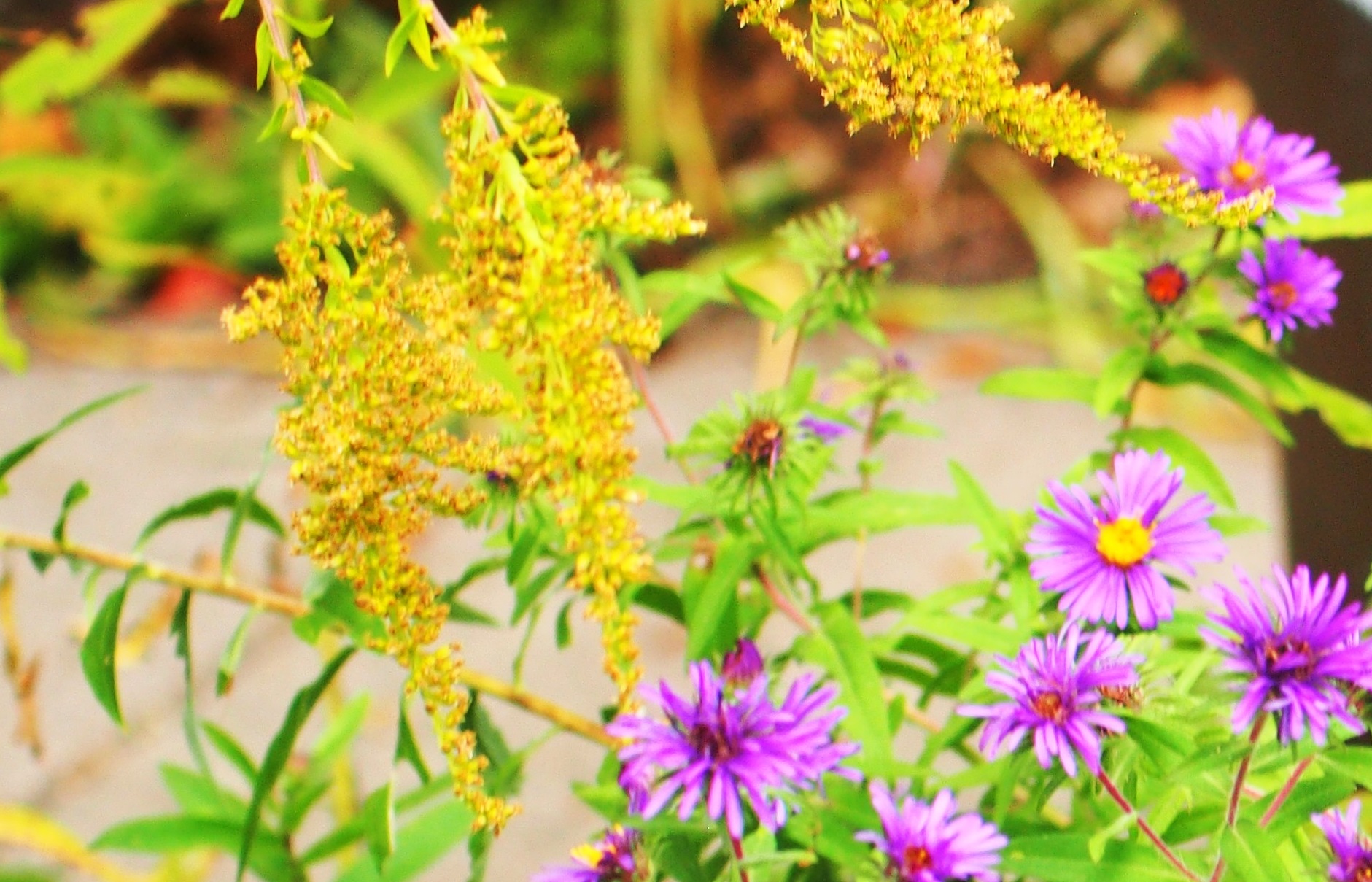
Remember that there is information in the name of the file for each image. You can see it by mousing over the image - look at the lower left of the screen. Or you can
click on the image to get to the (usually) larger image. Then the info is displayed in the address line above. Sometimes the second click will actually display a different view of the
original image.
Ant 1 was a new one for me - but it really wasn't. It's a Winter Ant Queen! Number 2 is an interesting Ant. It belongs to the Pallidefulva-group Field Ants, and goes by Complex Formica pallidefulva! Number 3 is the same.

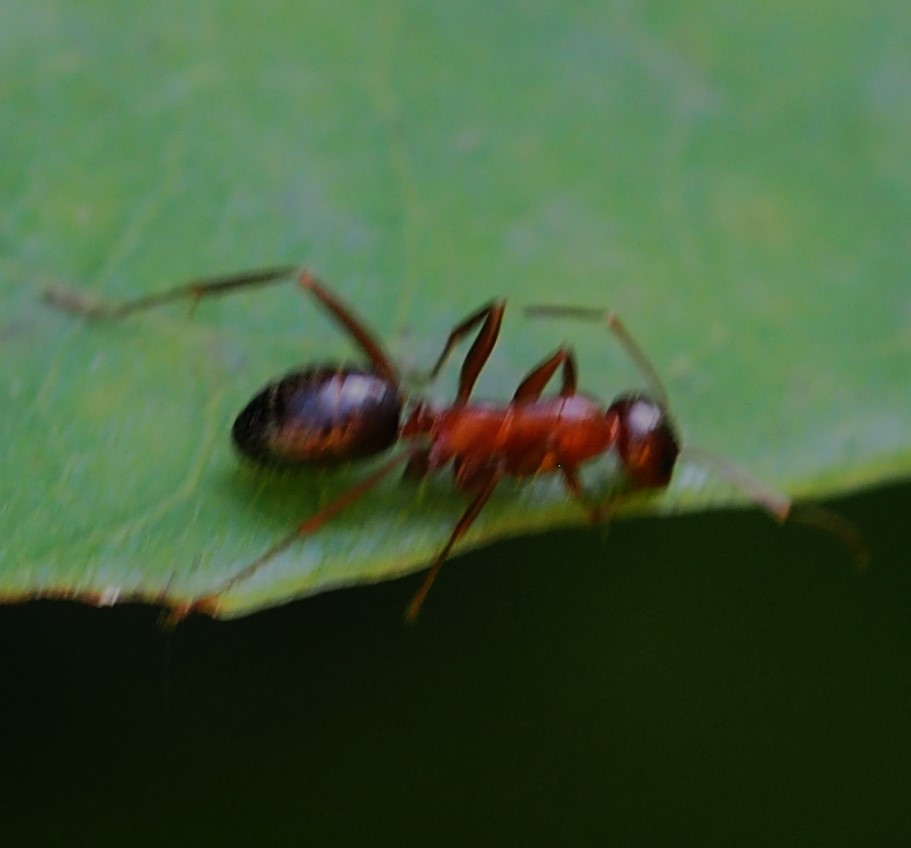
.jpg)
The Bees this week are just as good as last week's. Here is a green bee in Subgenus Agapostemon, a member of the Striped Sweat Bees. Number 2 shows another kind of green Bee. Third shows a Western Honeybee, the only kind of Honeybee in the Midwest.
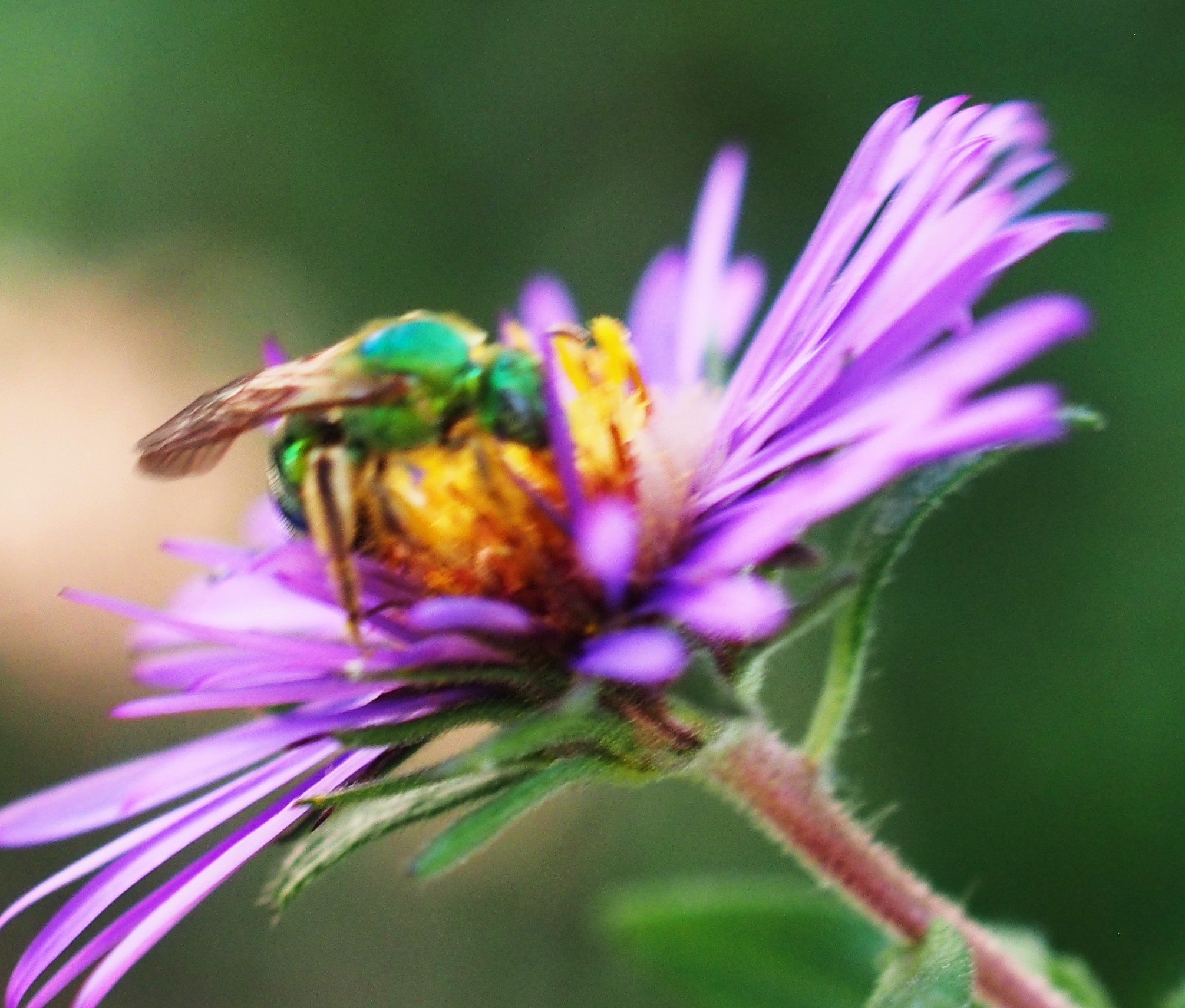
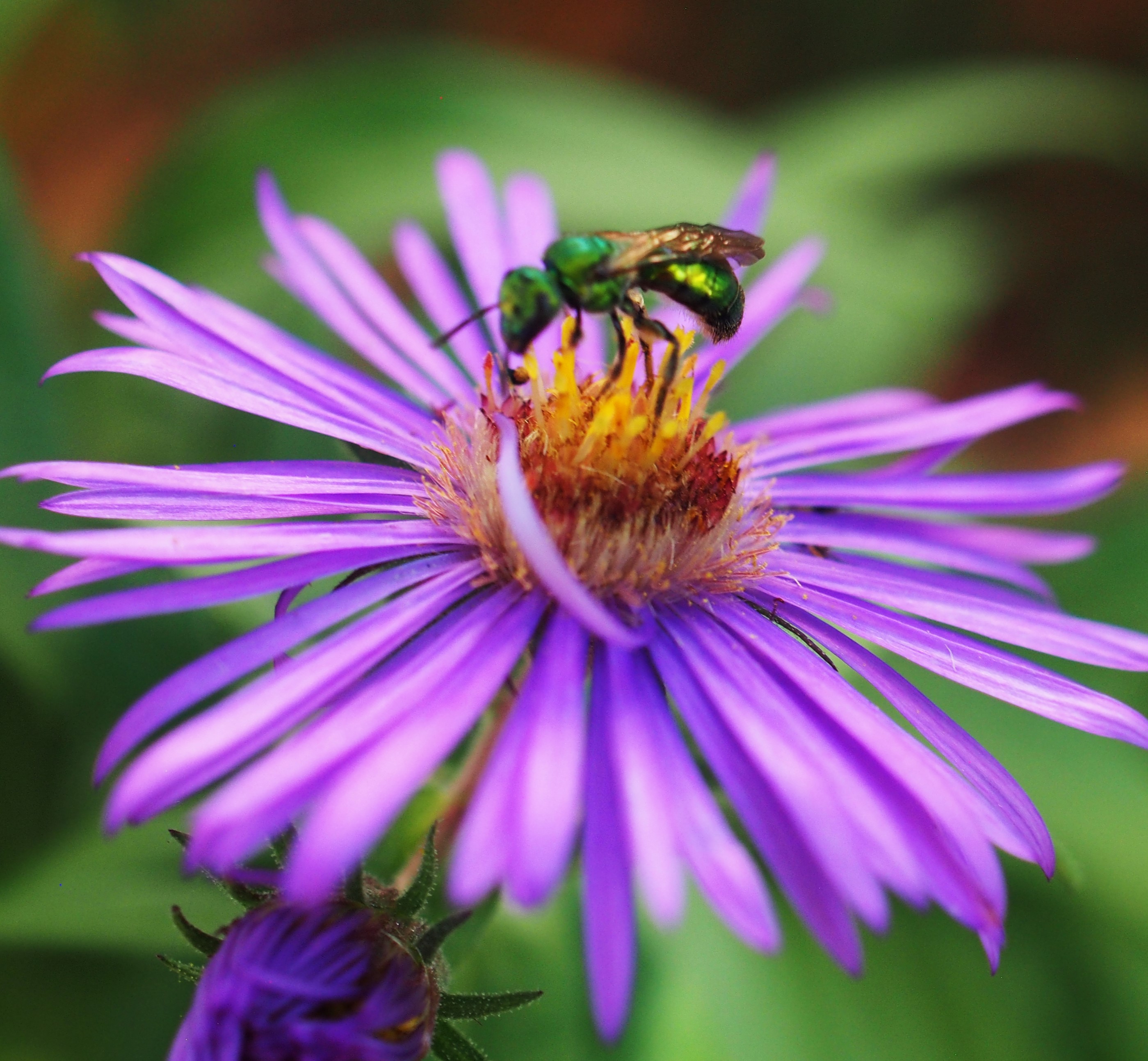
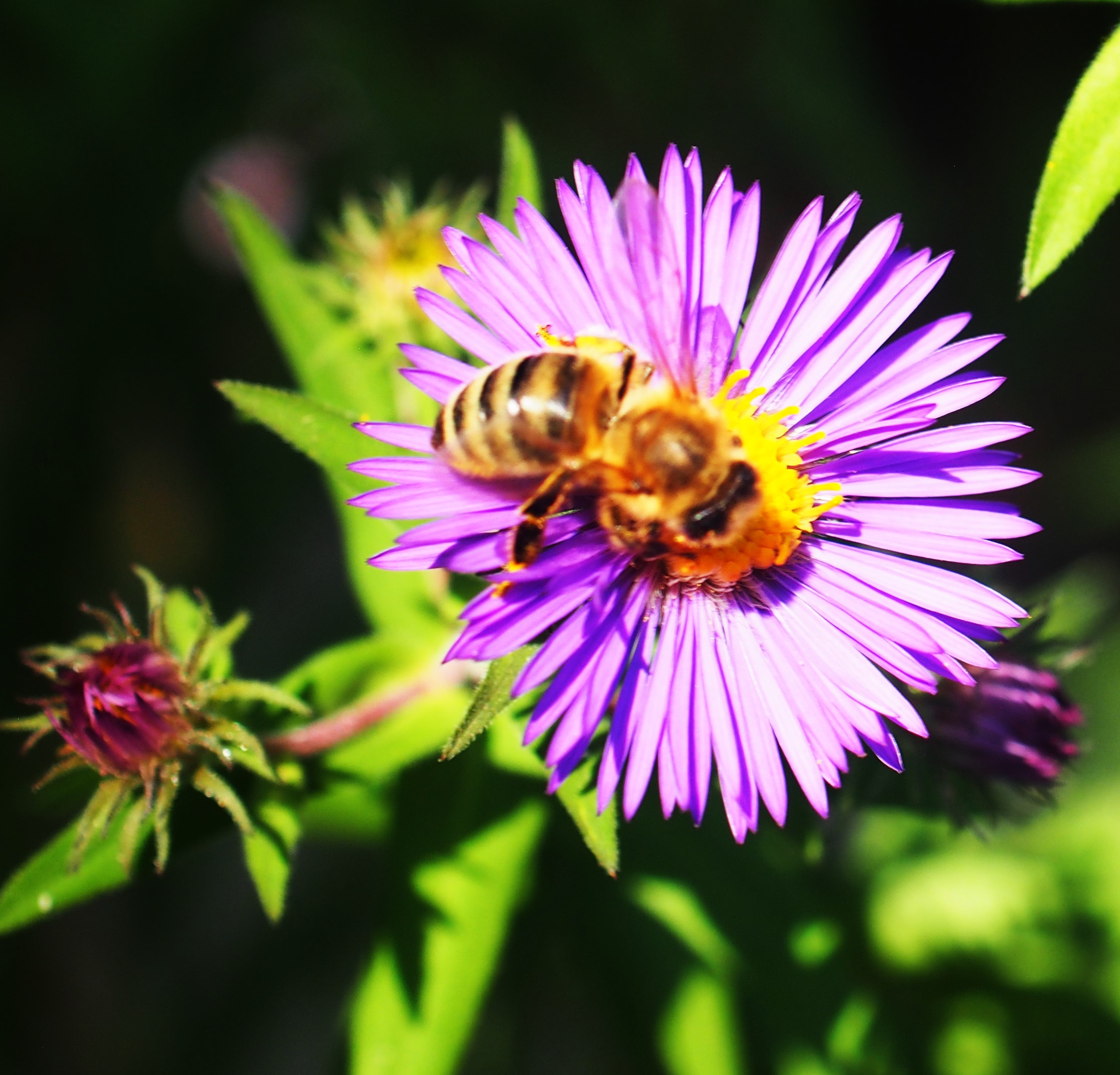
The Bumblebees also love Asters.
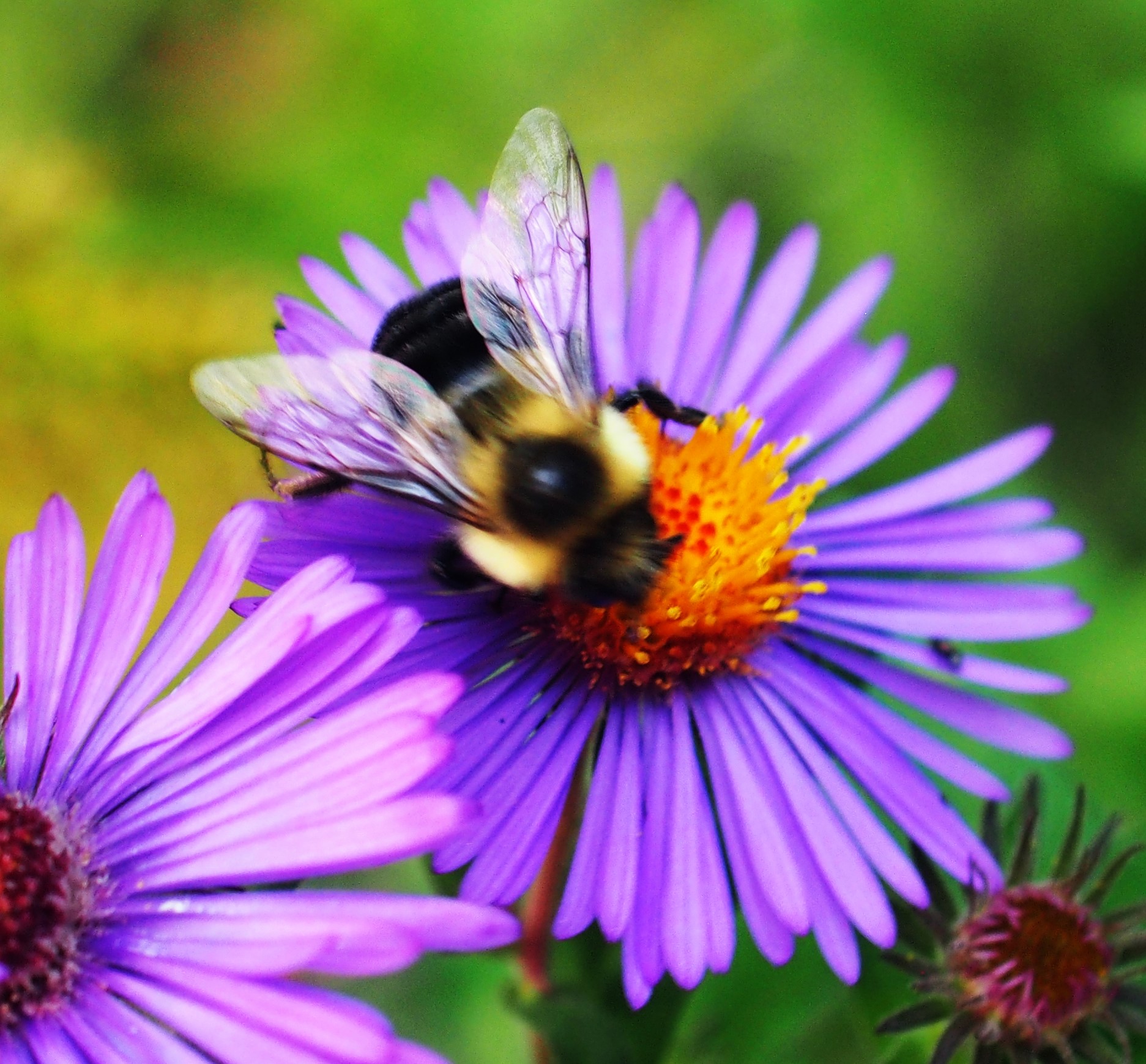
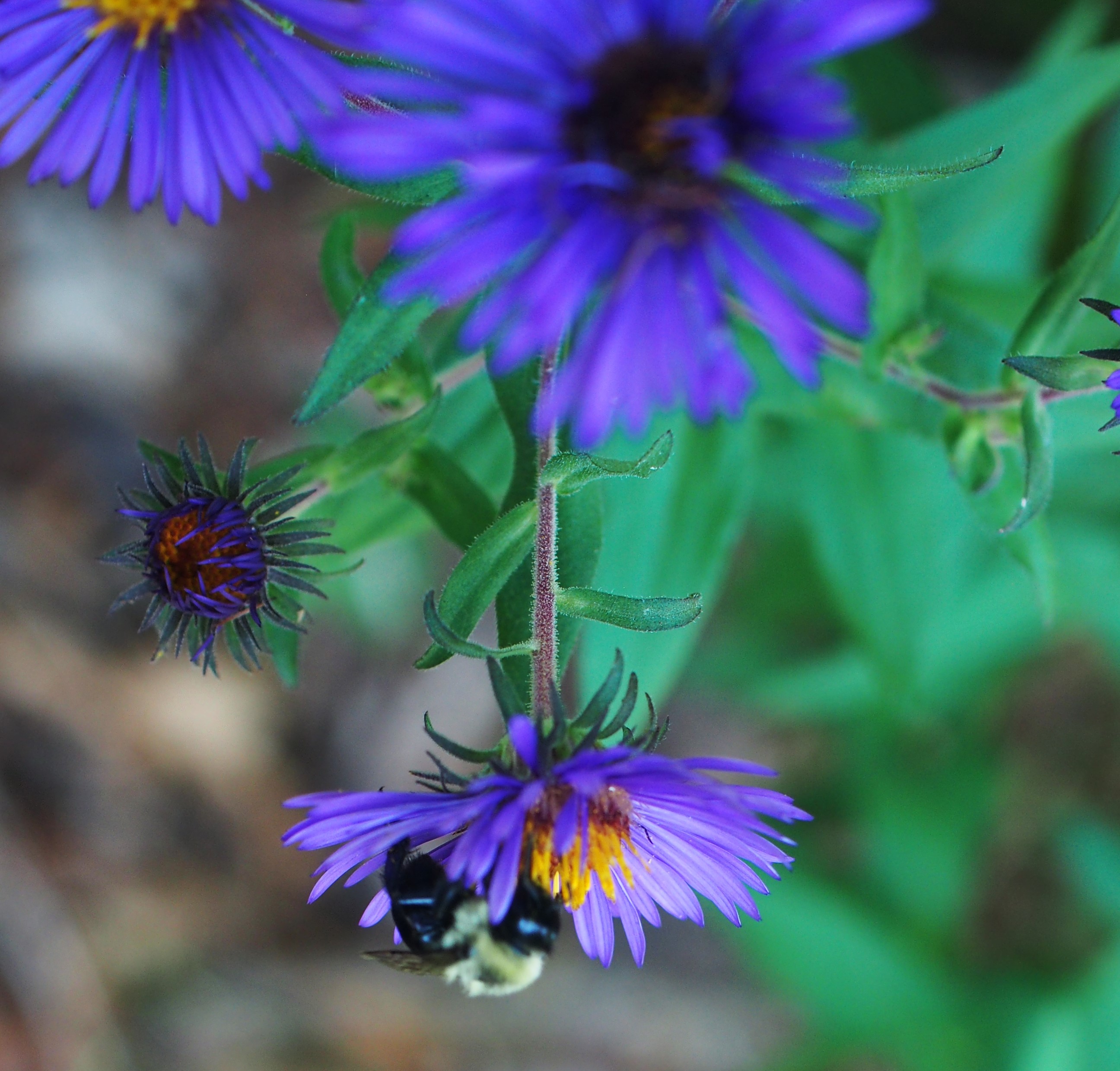
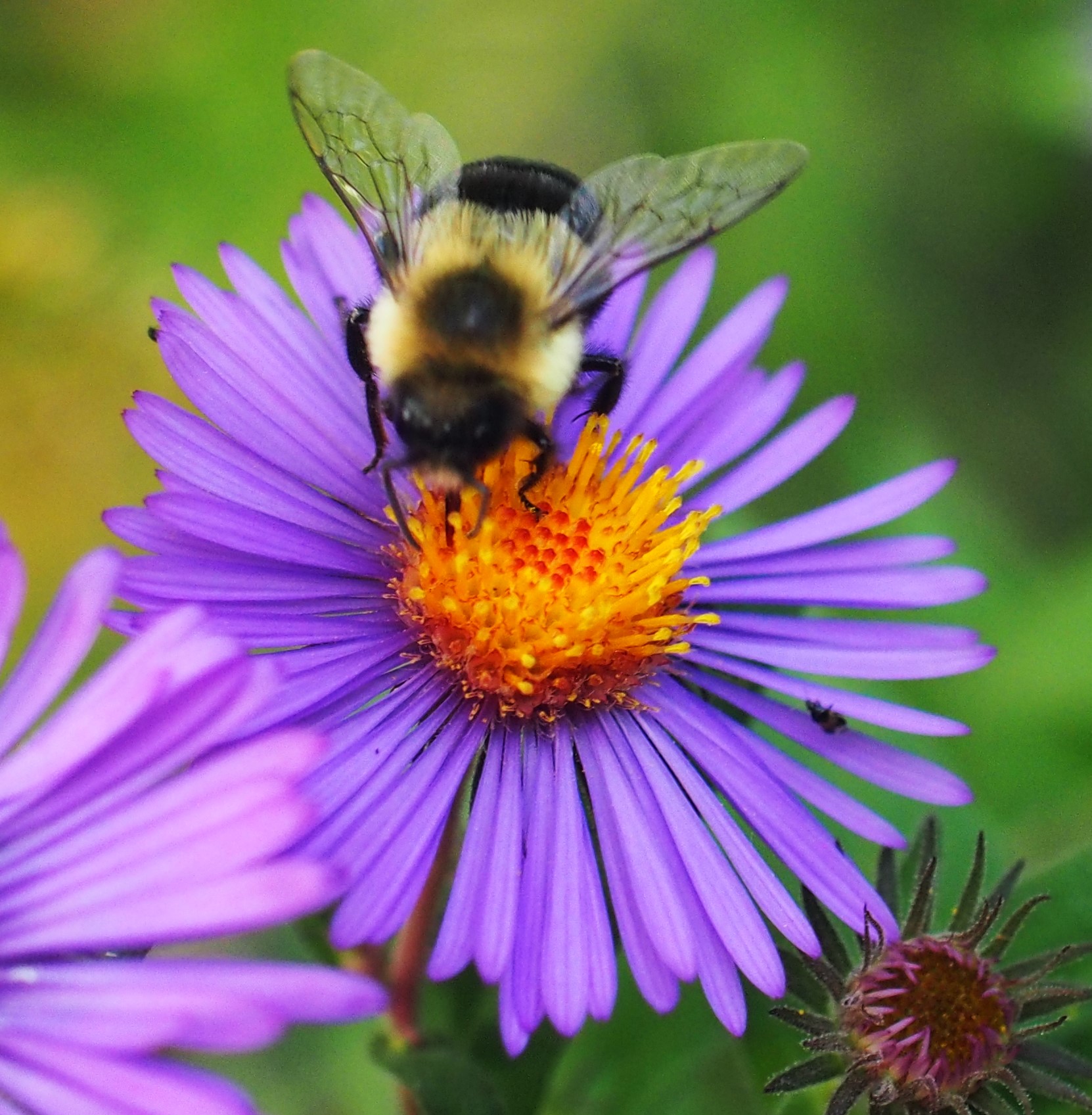
Let's skip to the Bugs. (I didn't see any Beetles at all this week.) Here are a couple of shots of Ambush Bugs. The third one is of a tiny black and white Plant Bug (I think)...
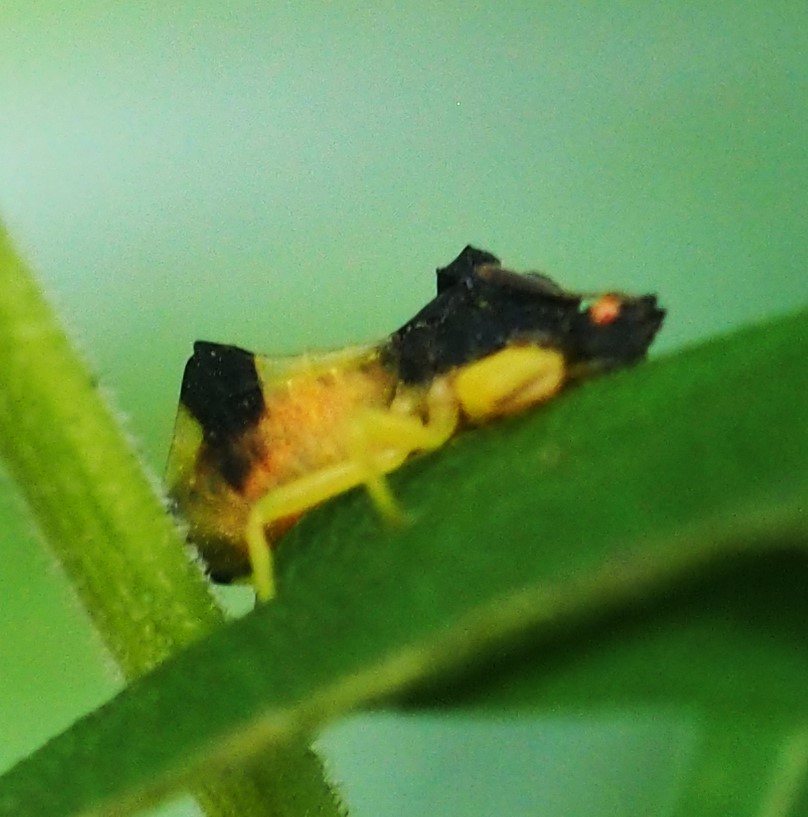
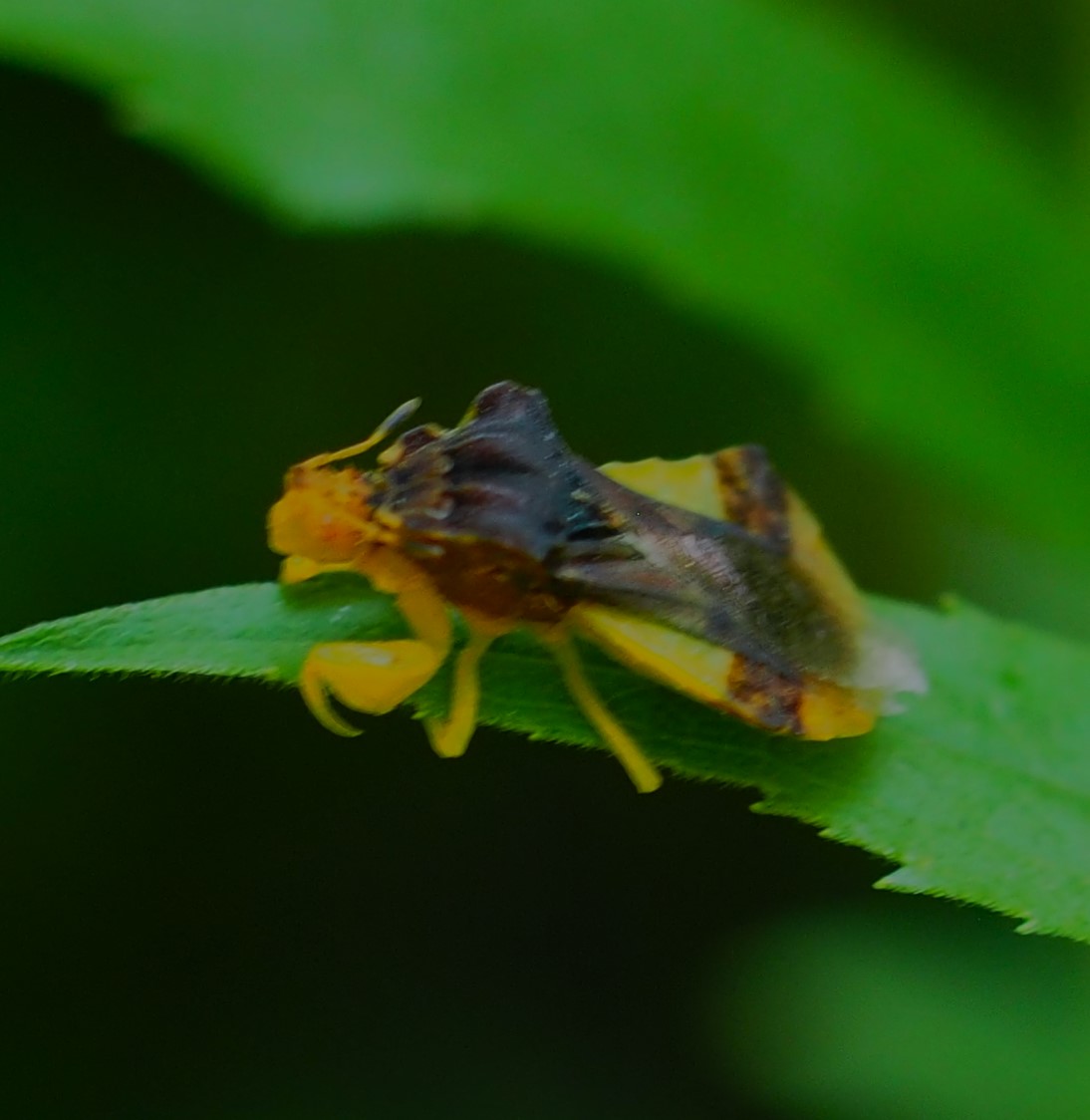
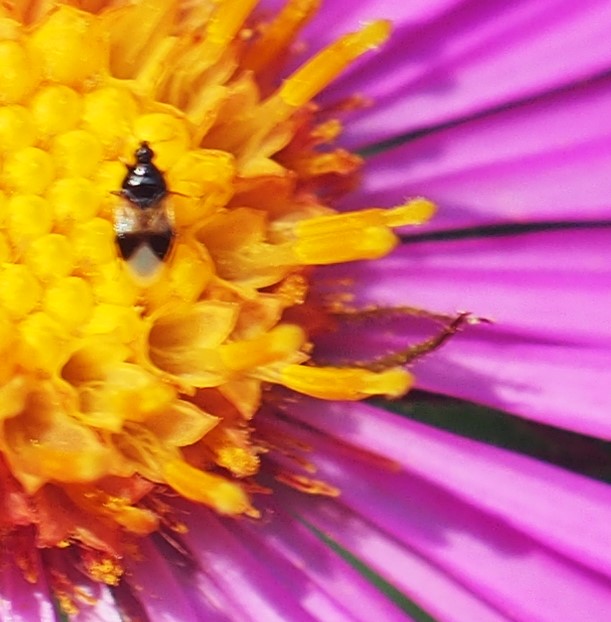
Here is the one Leafhopper of the week, Erasmoneura vulnerata. I think this two white thing is actually a Planthopper. Number 3 is an Acanthocephala terminalis, a rather large Leaf-footed Bug. (Look for the yellow tips of its antennae.) Fourth is an Issid Planthopper, Thionia bullata. (I hadn't seen one of these for quite a few years. It was on the North Wall with some Barklice.)
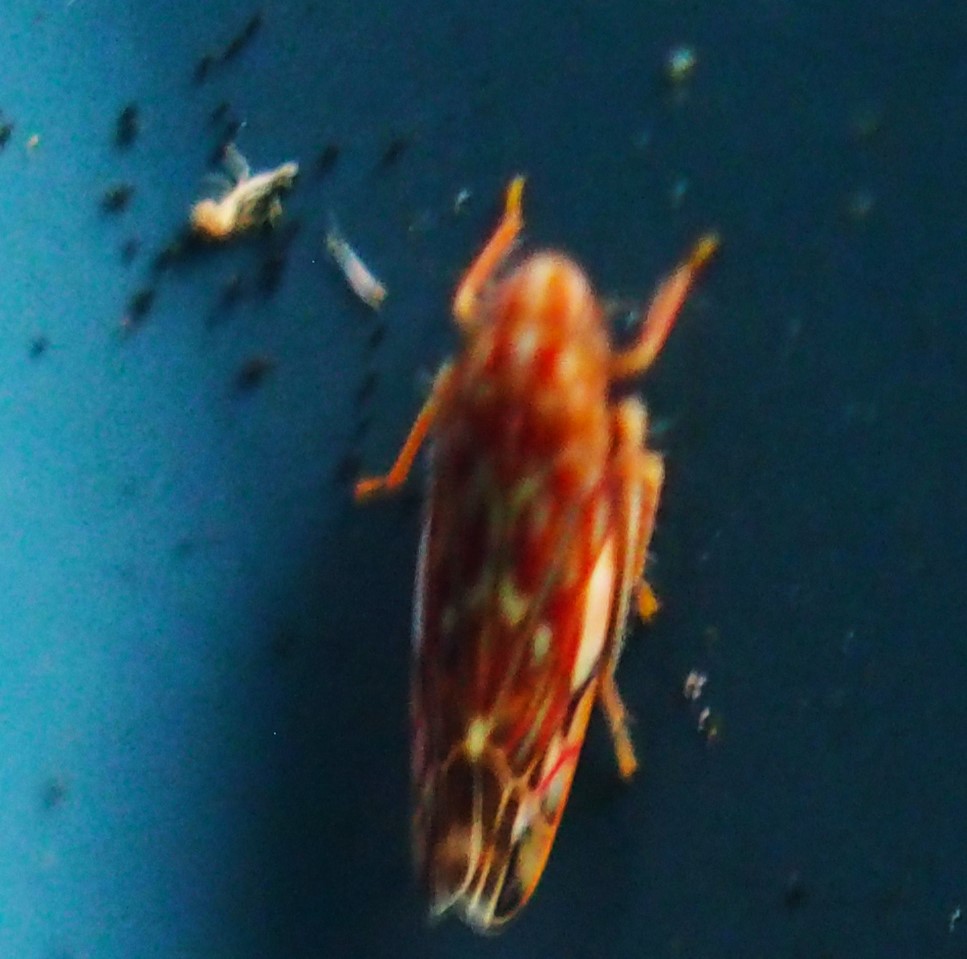
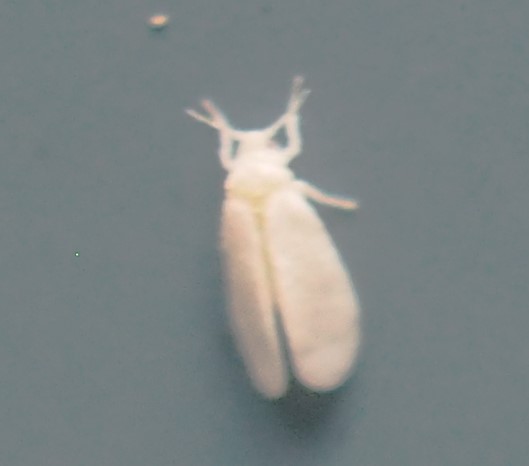
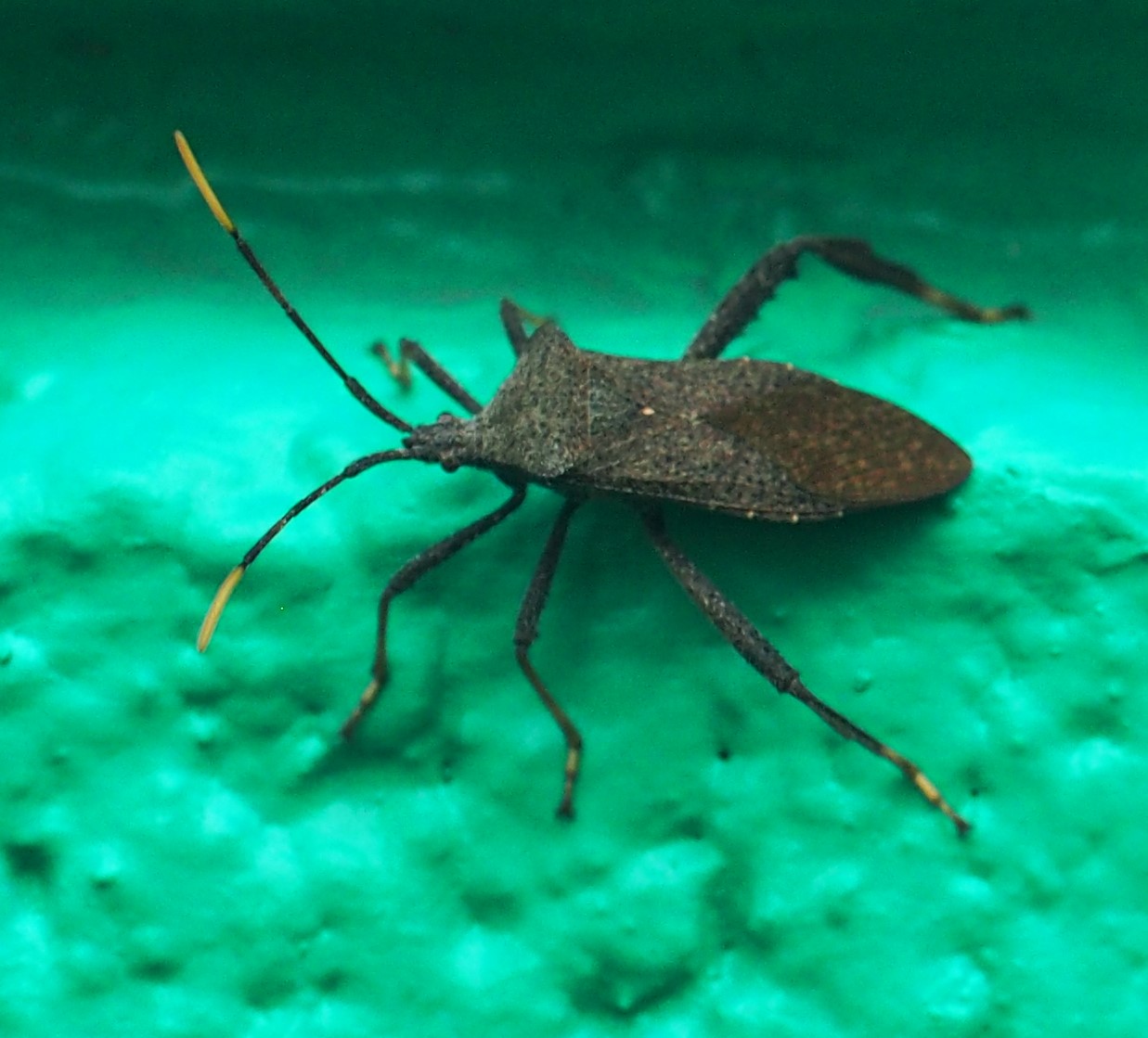
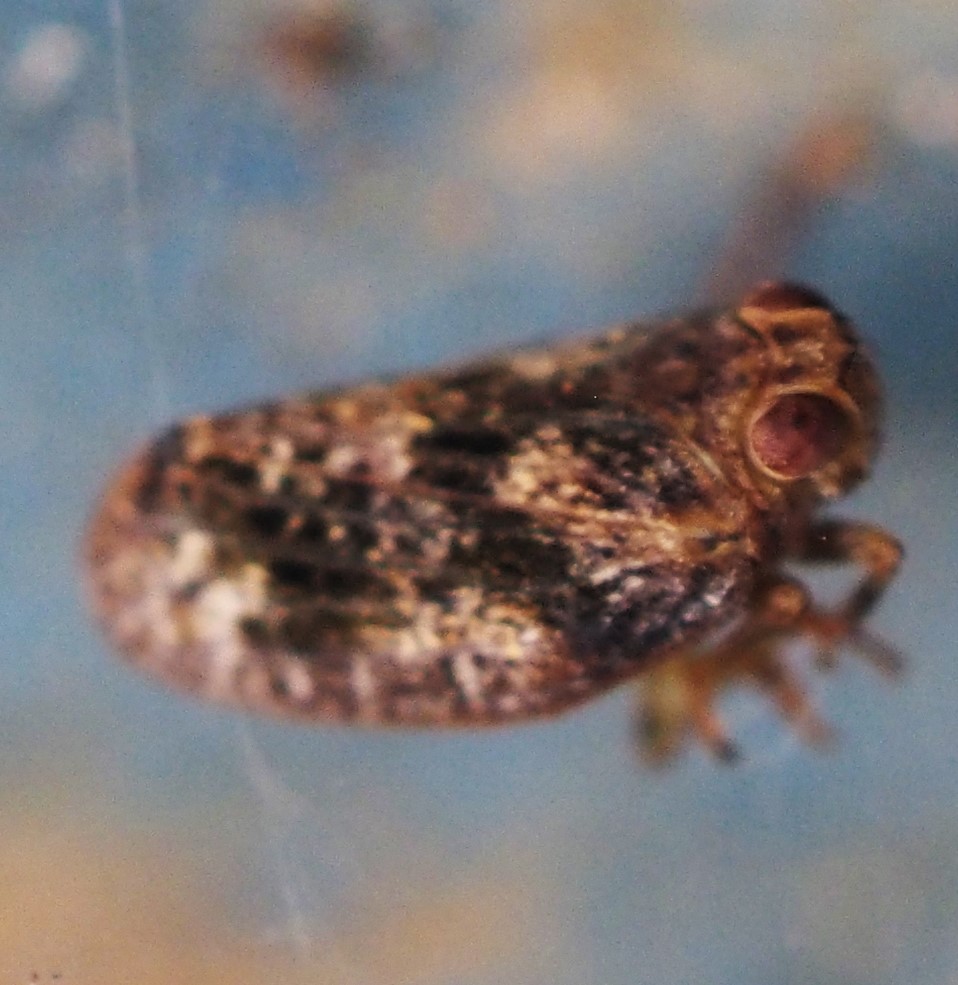
Time for a few Barklice. Here are some nymphs of Graphopsocus cruciatus; a quite a lot further developed nymph; and an adult.
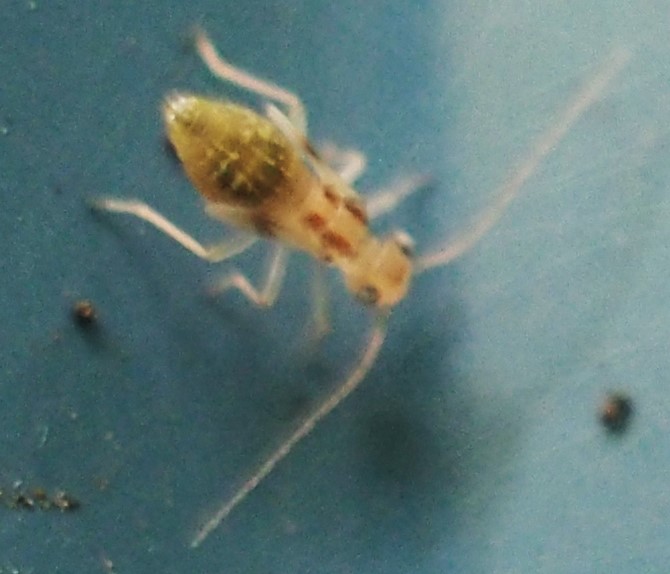
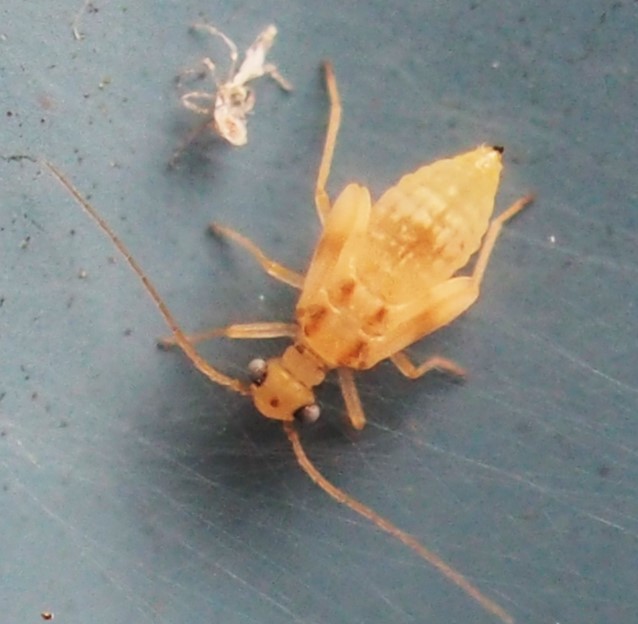
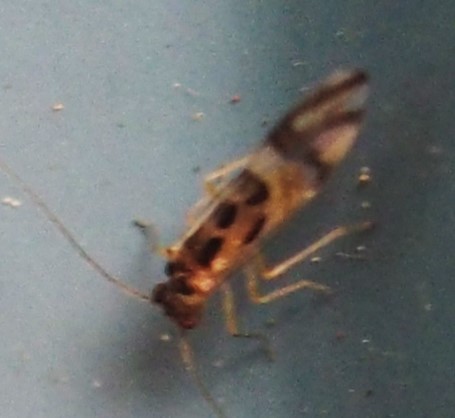
Here are a few Polypsocus corruptus, all adults, and all females. Apparently the males don't have the white exterior band.
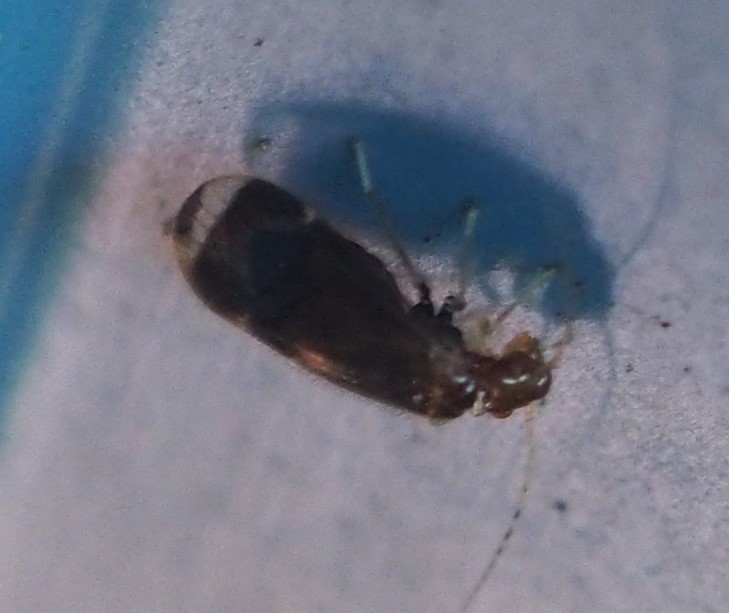
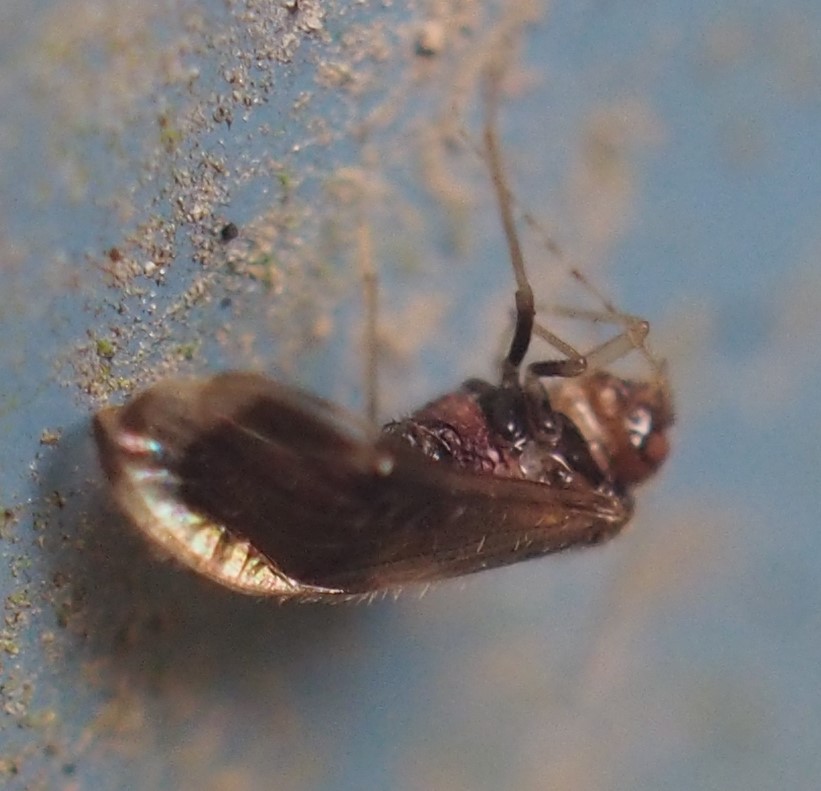
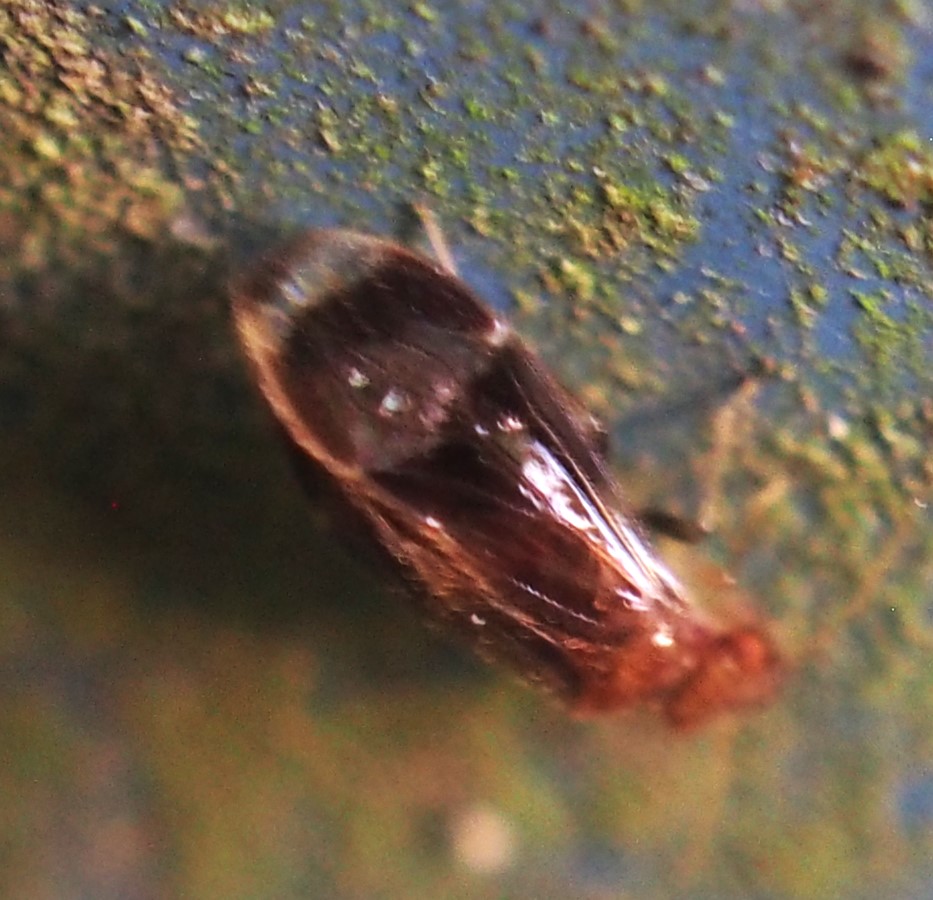
I believe these are two nymphs, approaching adulthood, probably of genus Metylophorus.
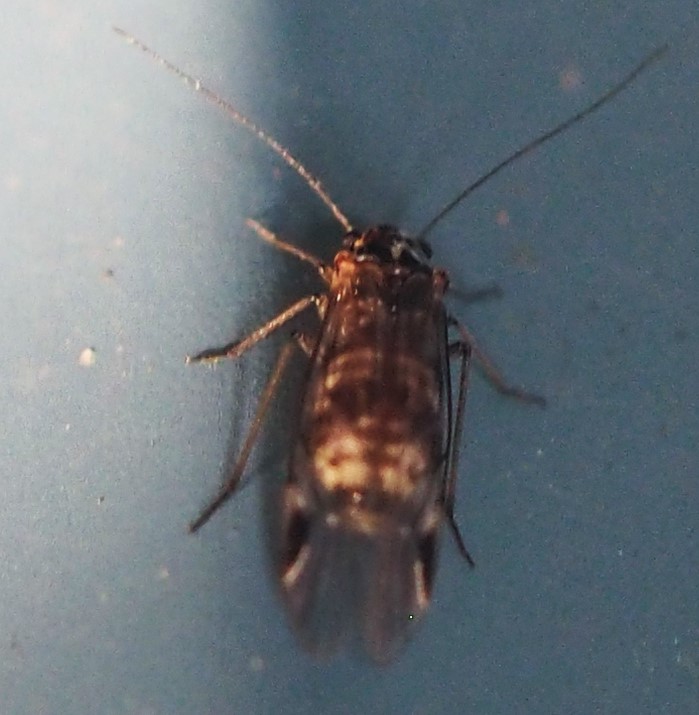
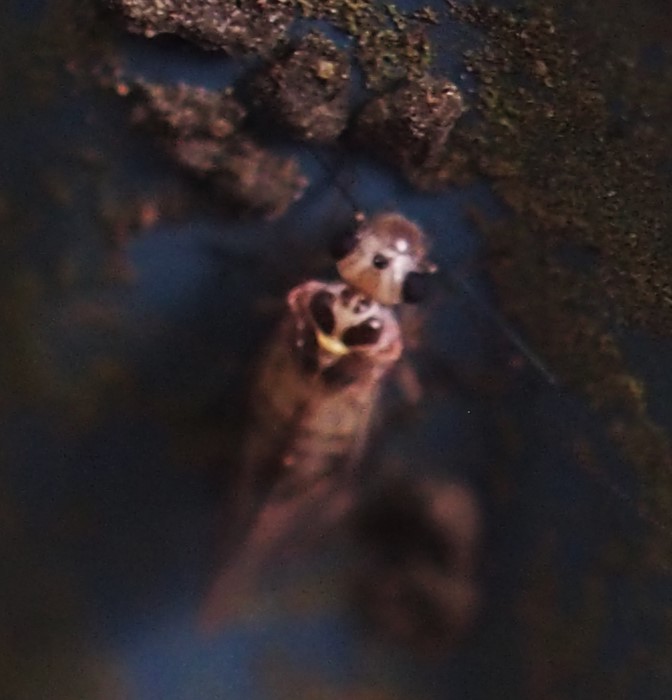
It wasn't such a great week for Flies. But it was great for Bathroom Moth Flies.
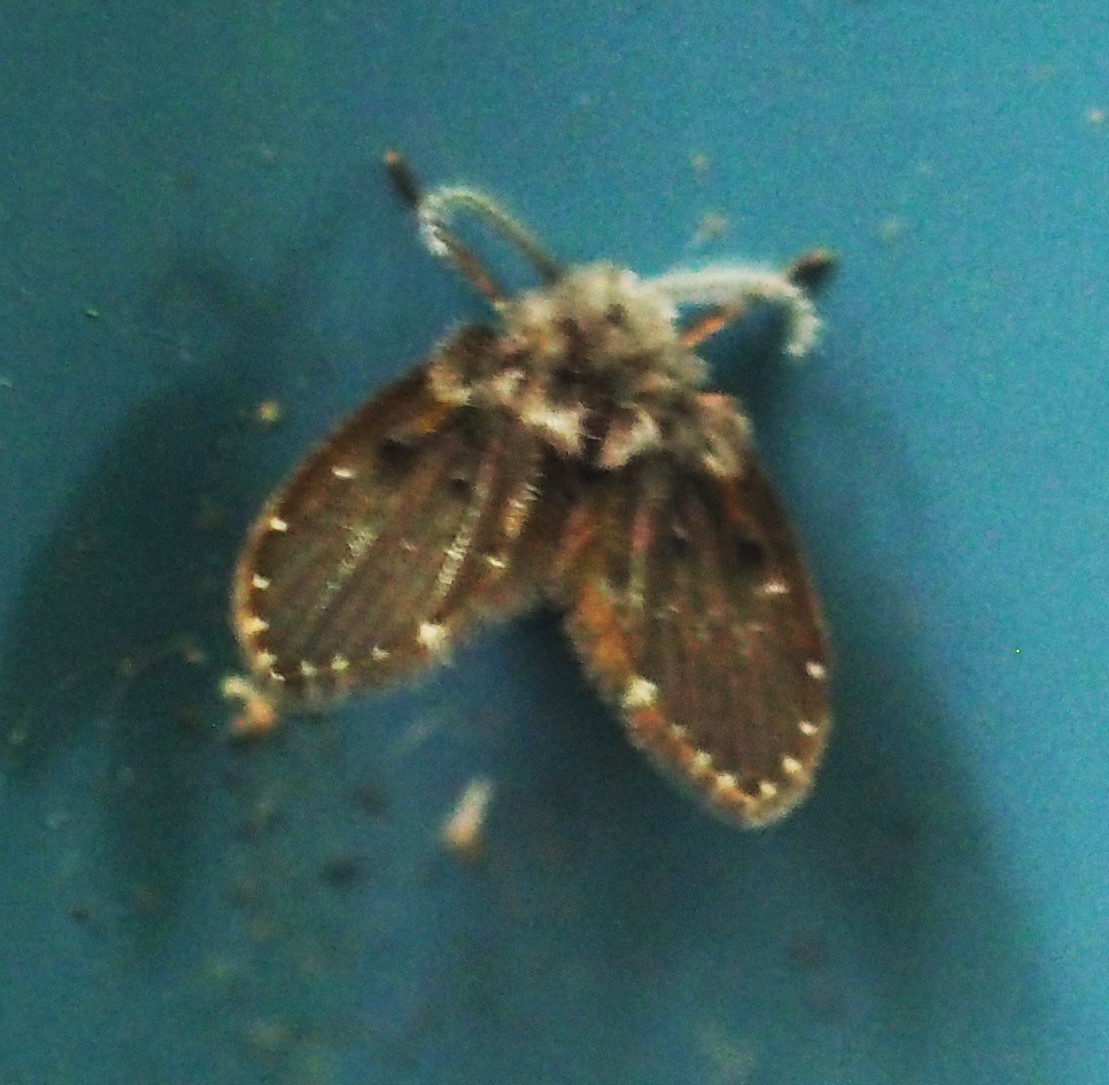
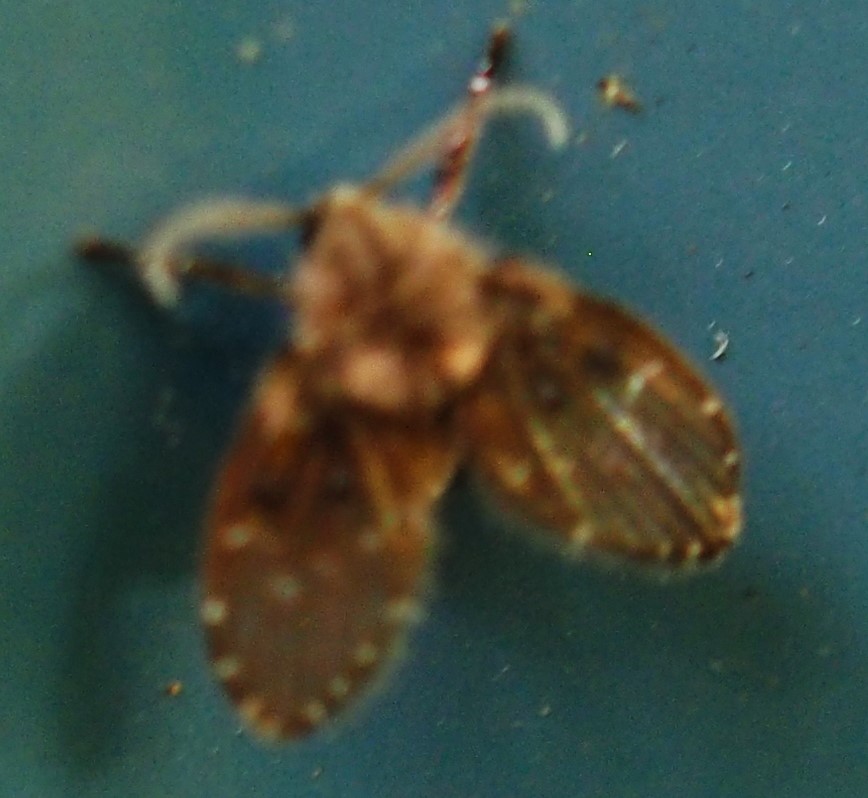
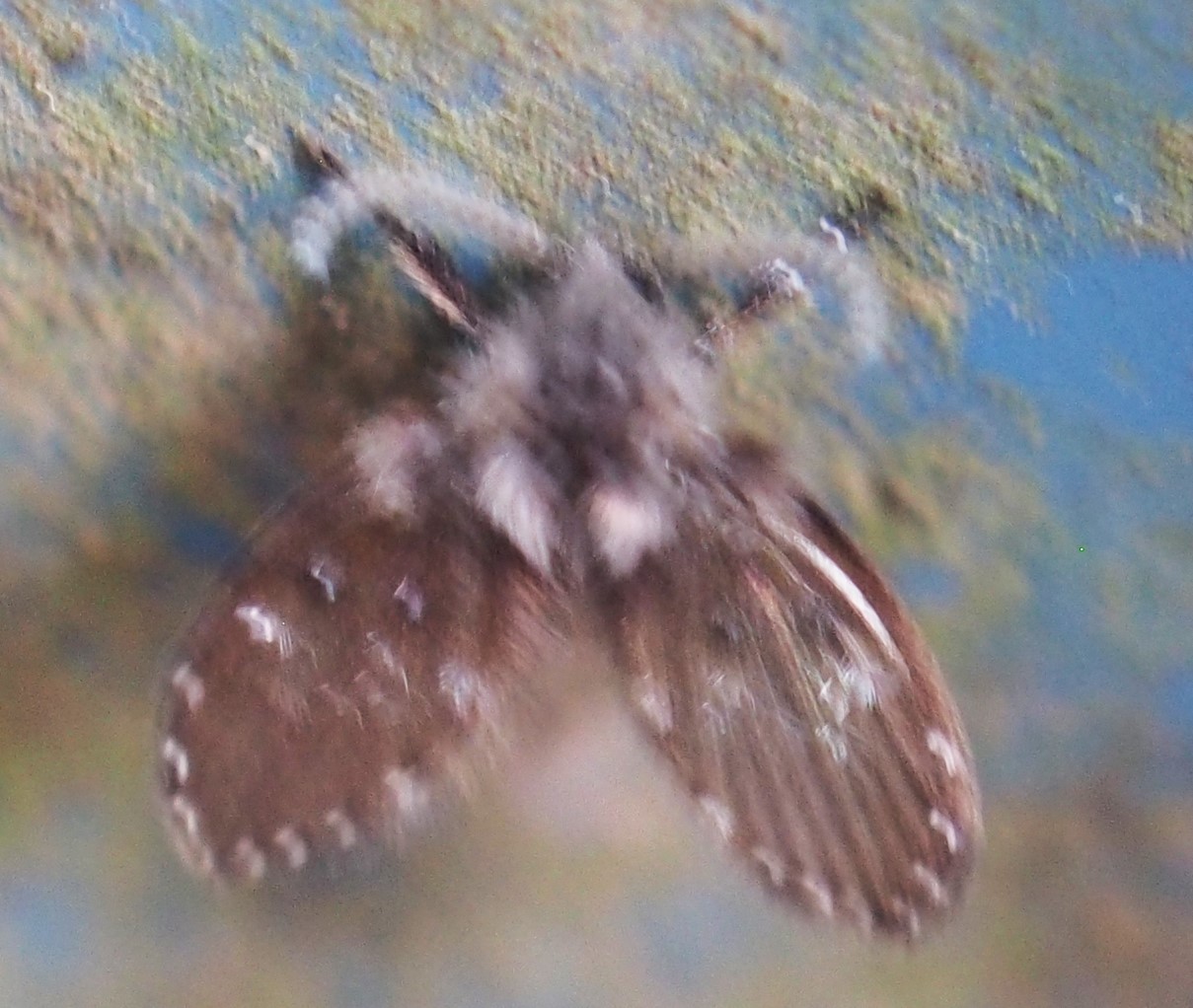
Here is a Crane Fly. I thought it was a rather large one but a friend from iNat said it was in a Limoniid Crane Fly, and I thought the Limoniids were usually quite small Crane Flies. So don't count on my memory! It is a Crane Fly! Next is a Mosquito. Third is a little Fly of genus Minettia.

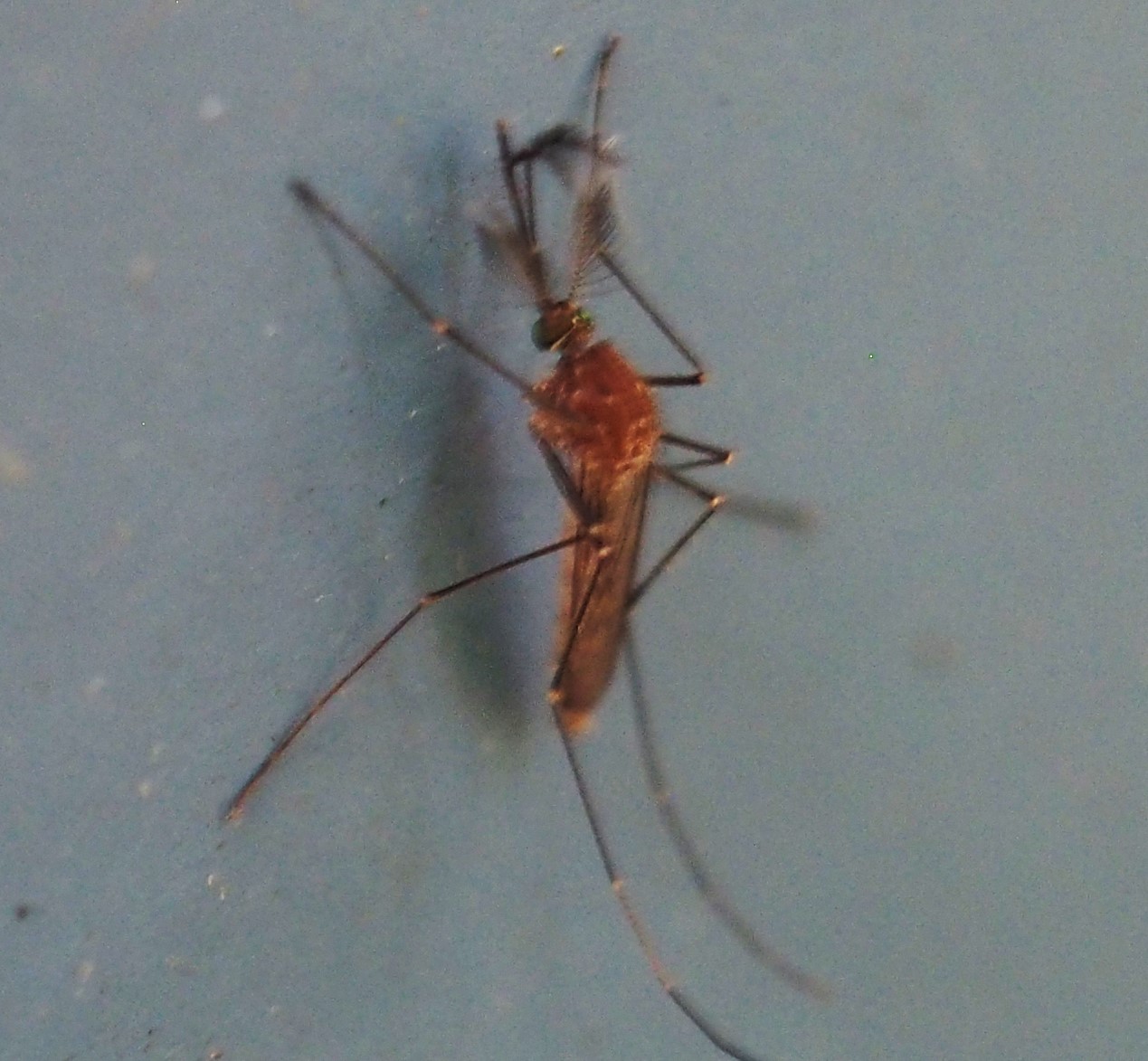
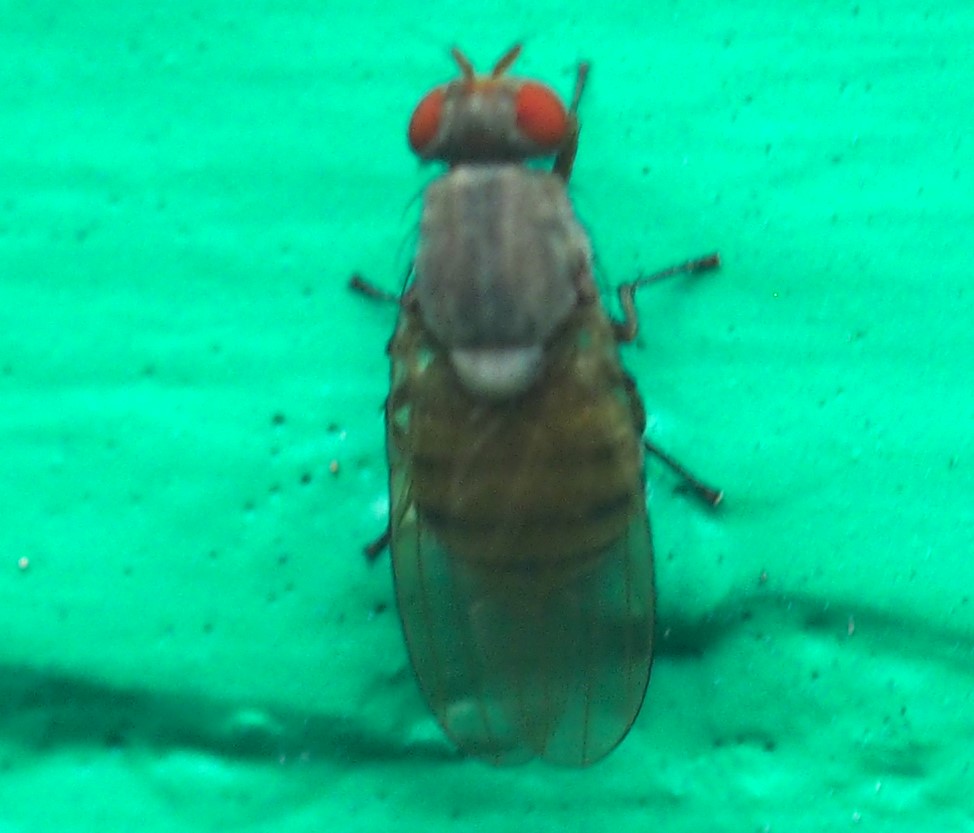
Here is a lovely little white Moth, one of the Curved-horn Moths (Superfamily Gelechioidea). Second is a tiny caterpillar of one of the Pug Moths.
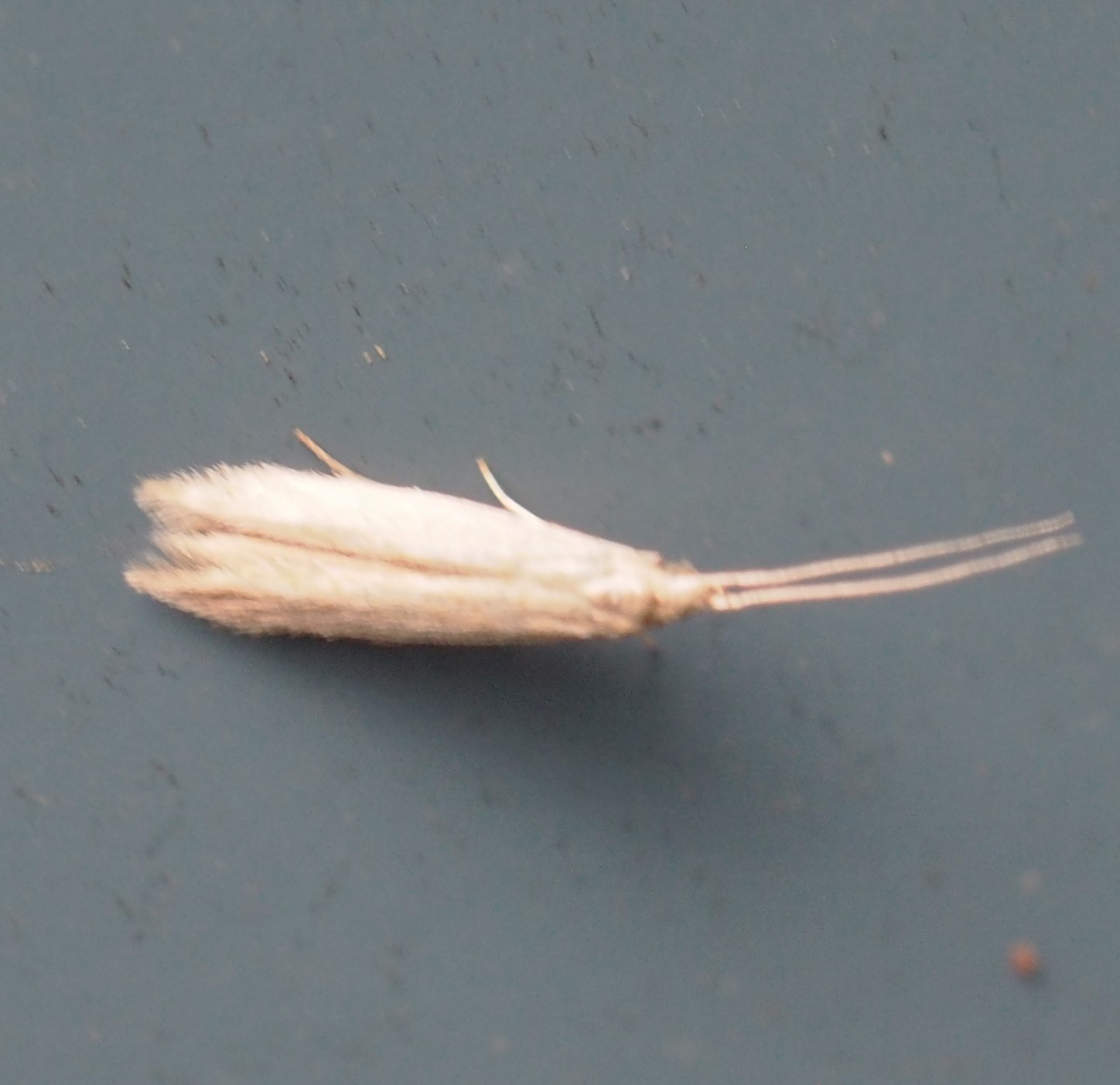

Ready for our Flower Walk? I don't deliberately start alphabetically, but the Japanese Anemones are always at the top of the file of pictures, and they are often the most awesome displays, many reasons to start with them.
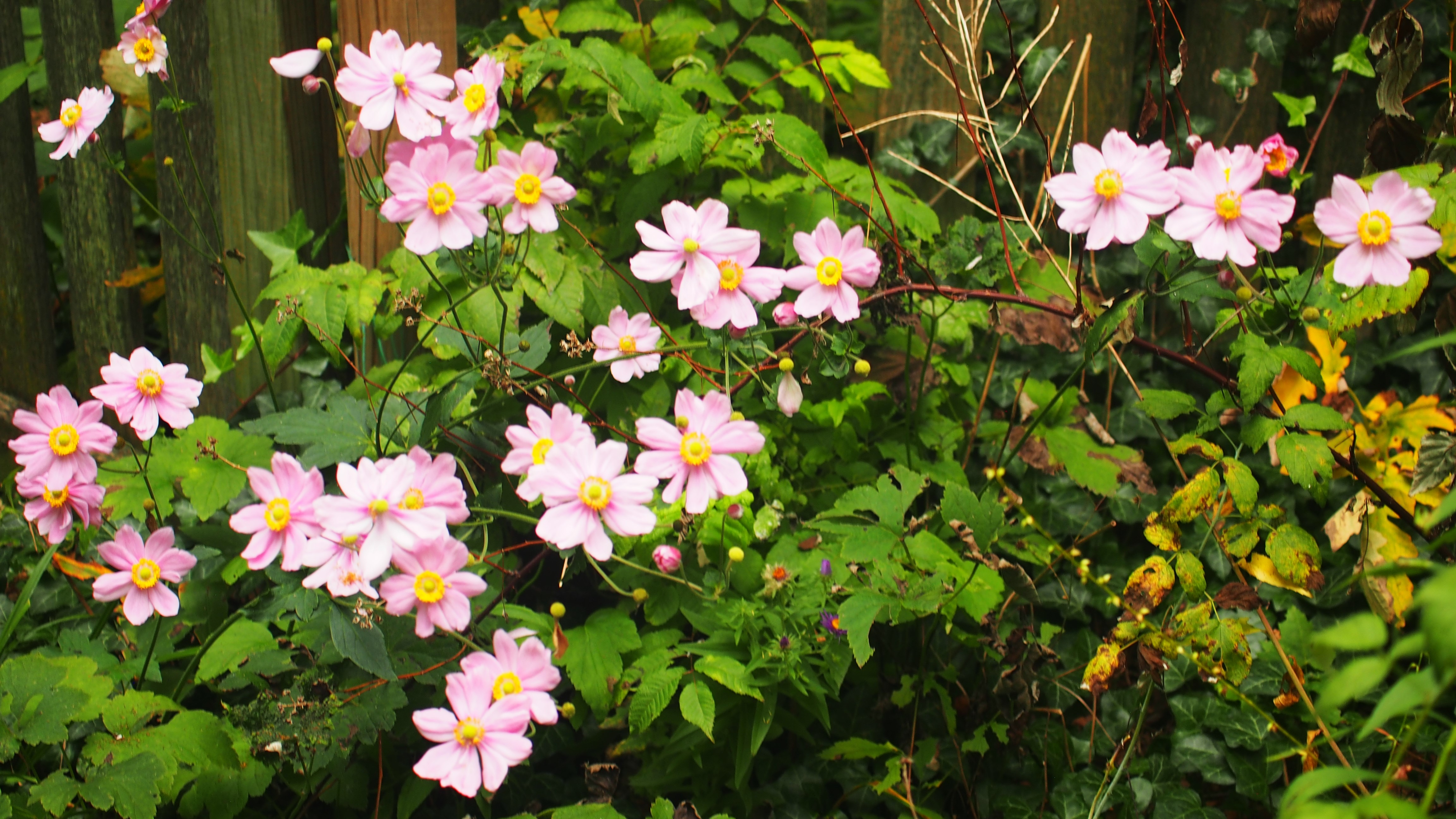
But those Asiatic Dayflowers come right into line. Don't worry, we'll break out of this pattern soon.
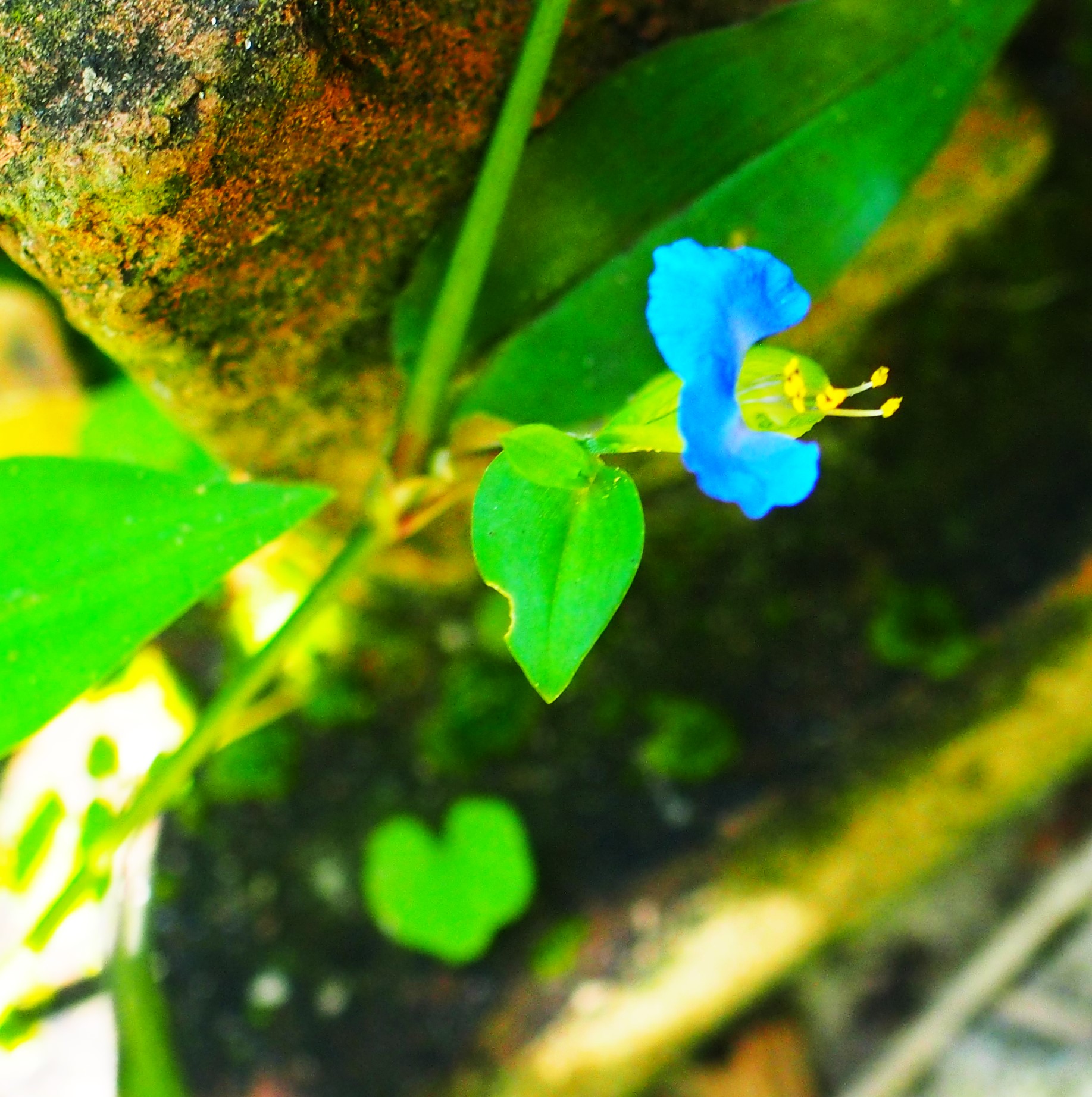
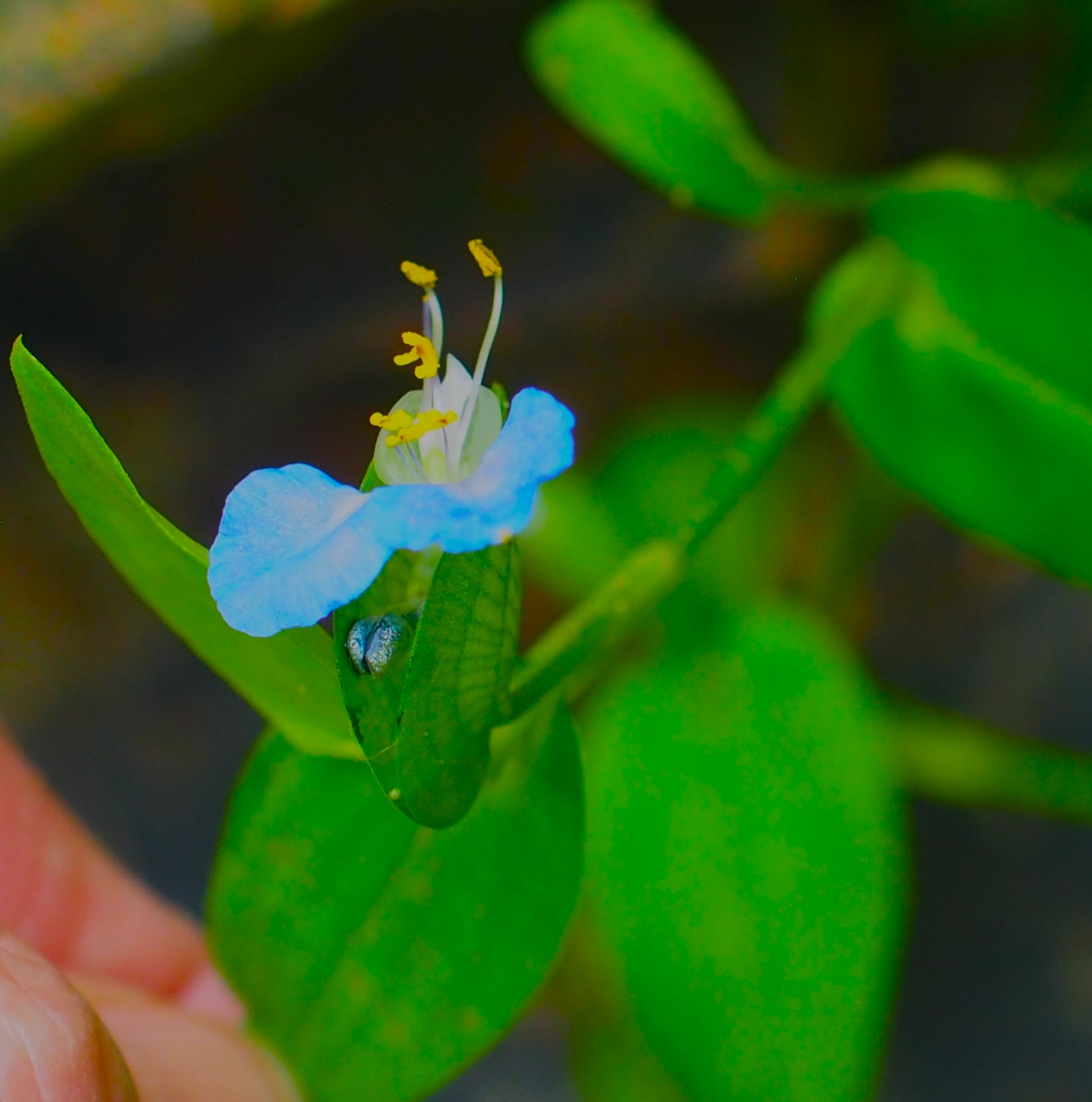
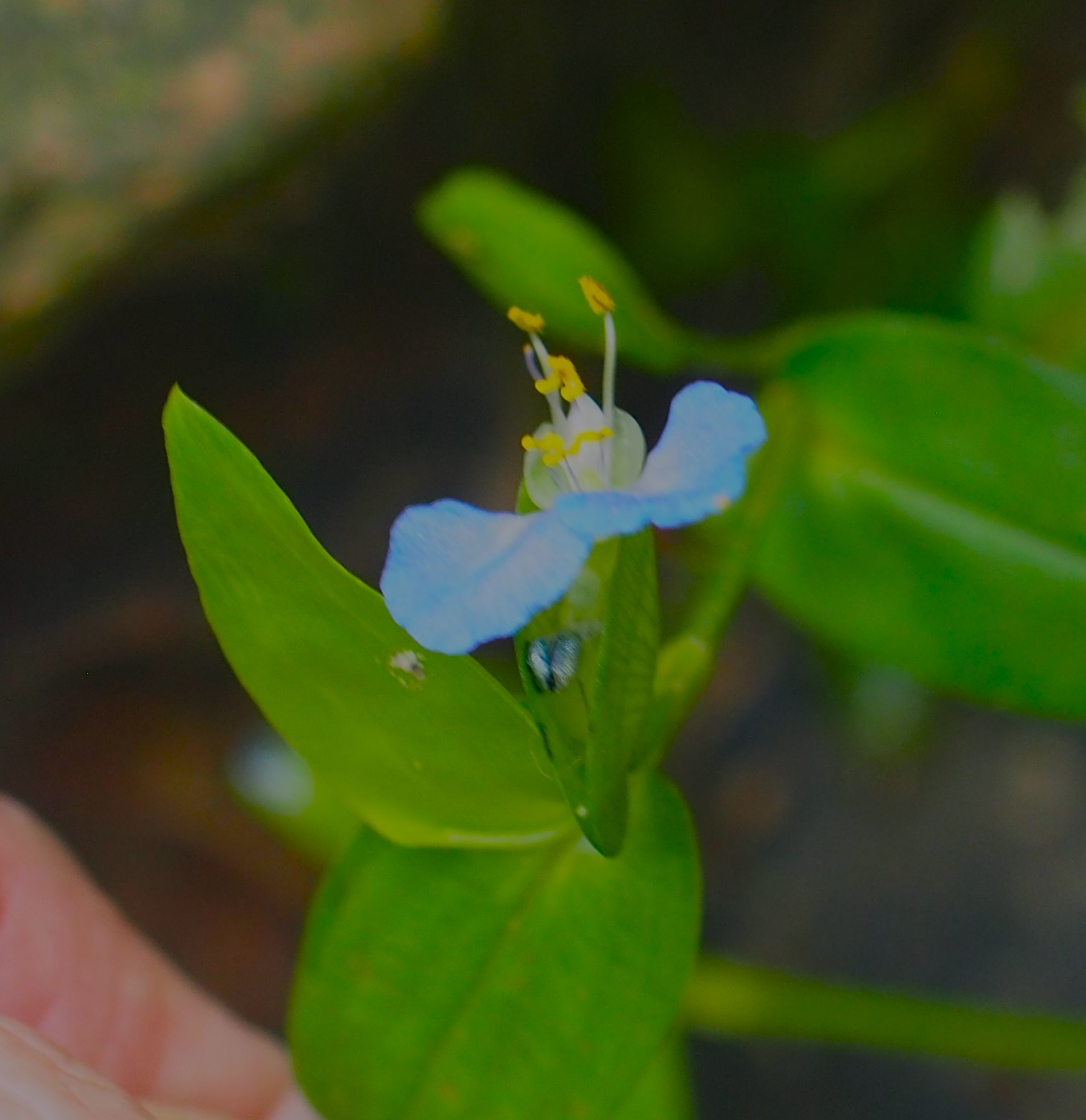
As the Goldenrod began to fade and the Asters went a bit (not too much of course) out of their prime, I had an idea. I decided to cut down the Asters and Goldenrod into decent-length (a couple or three feet long) sprays and add them to a festive little booth celebrating our Autumn season. Everyone (this is my friend Cathy Glick) added his or her own touches.
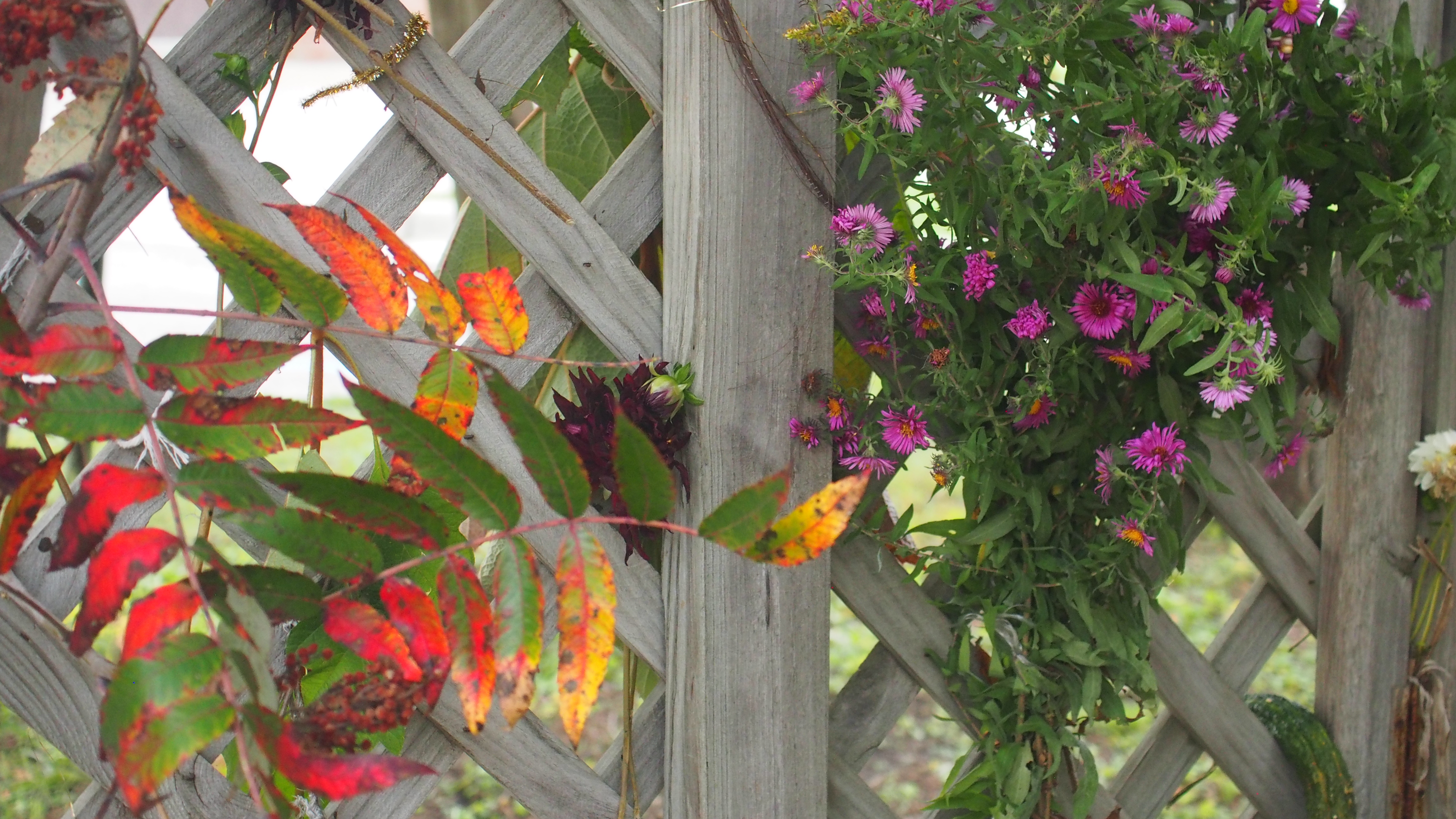
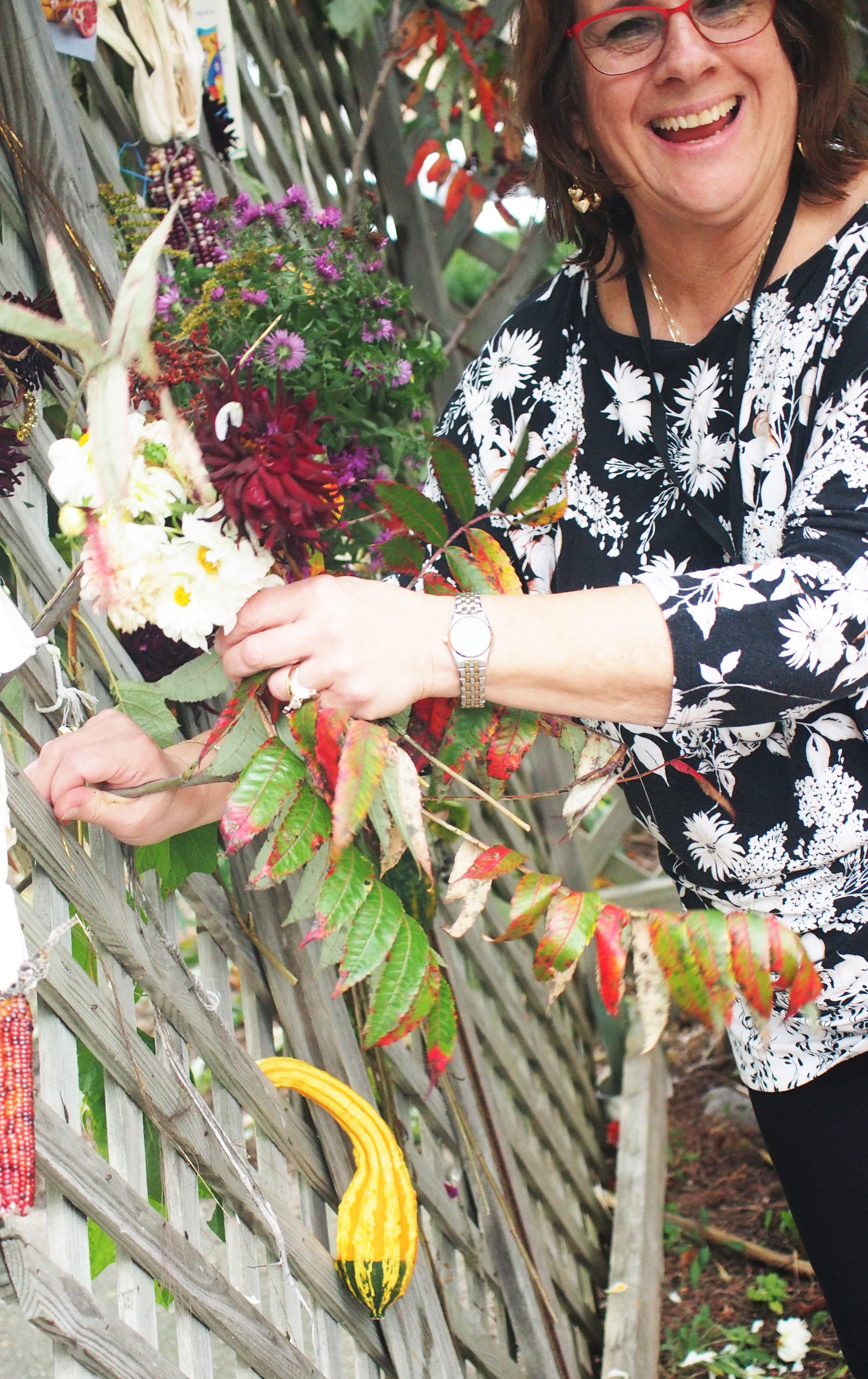
Other colors are now adding themselves to the scene. Oh, I LOVE this part of Autumn.
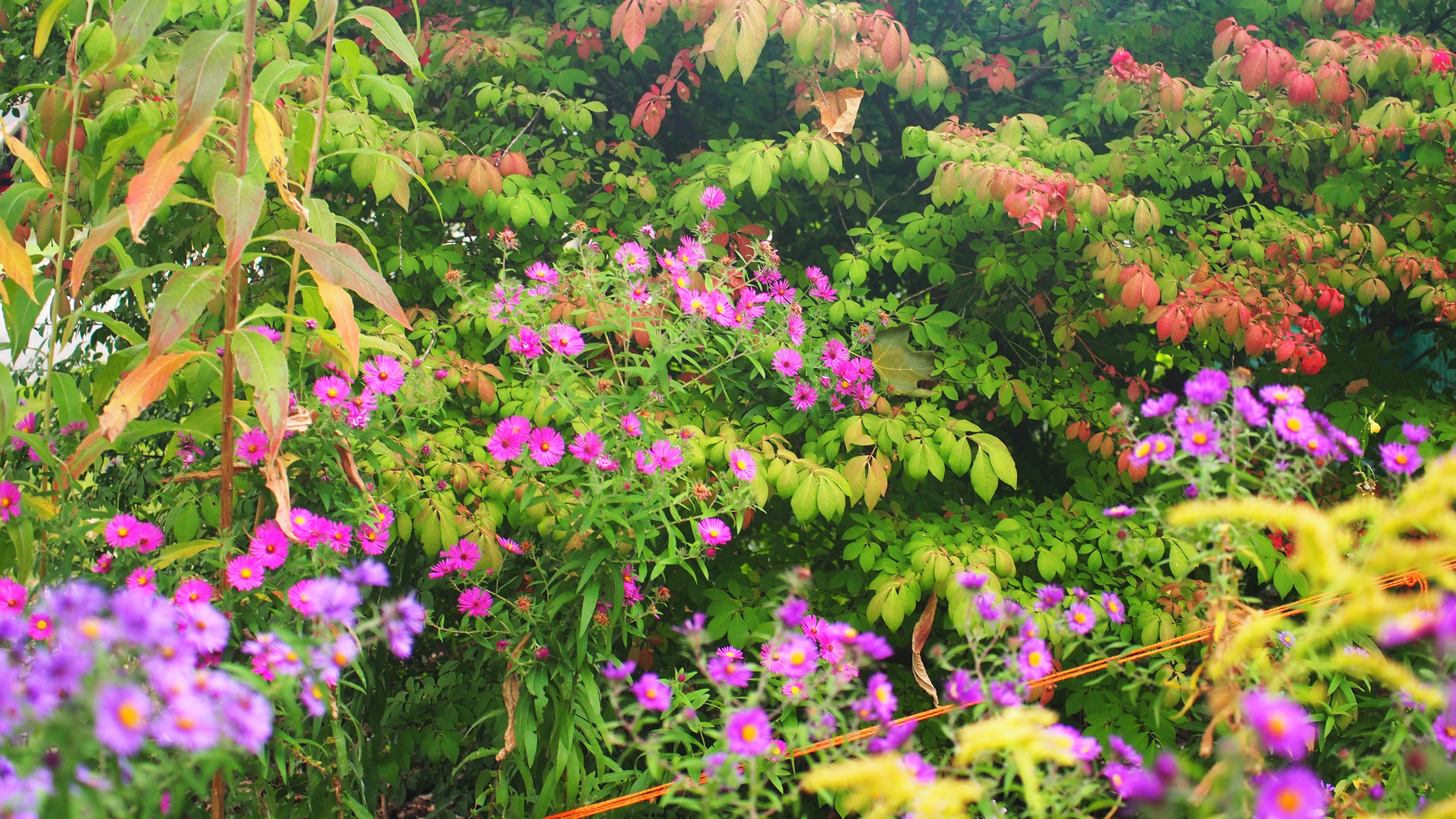
The Colchicum is beautiful even though it is beginning to collapse in a) the front yard and (b) and (c) the back yard.
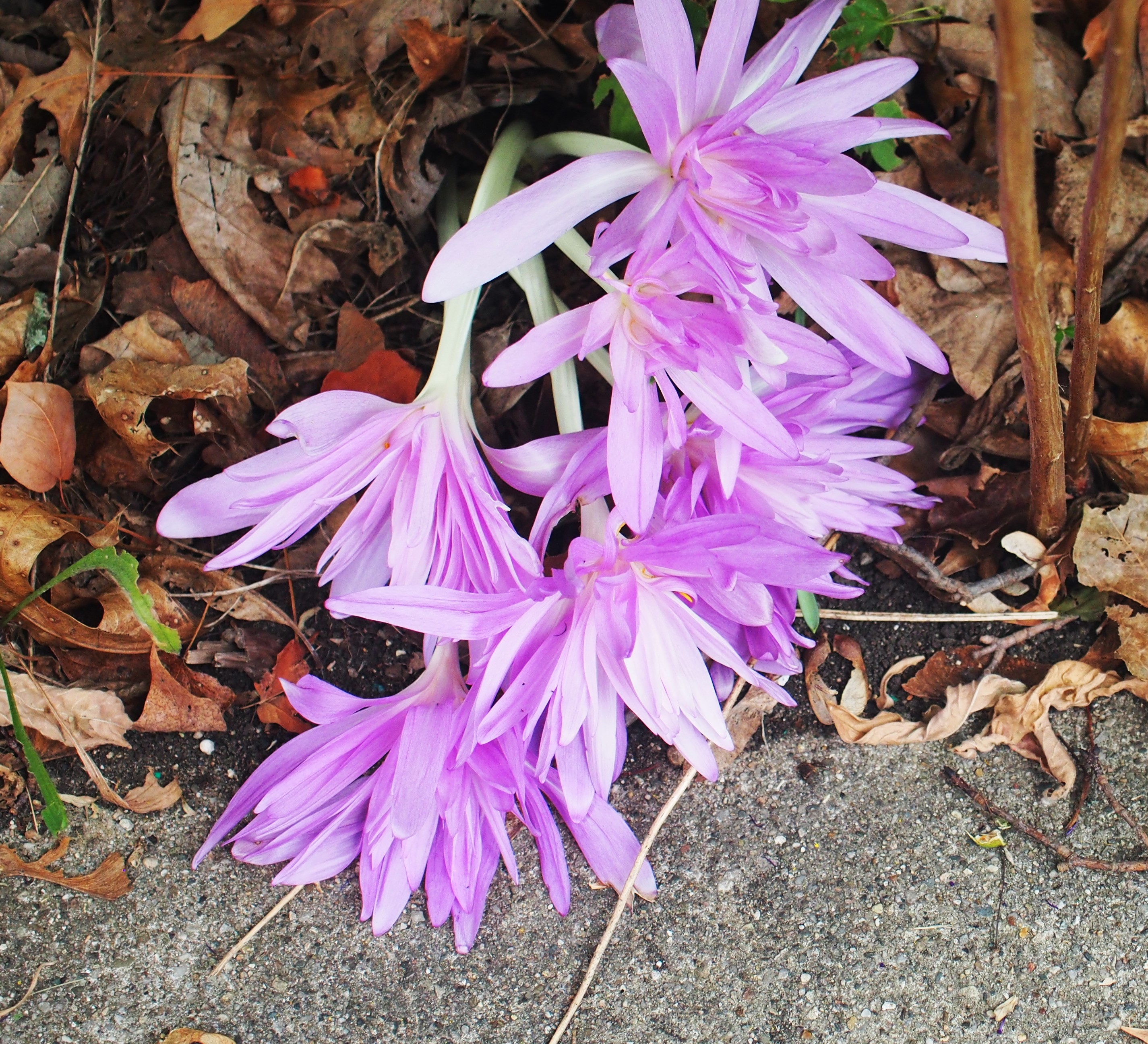
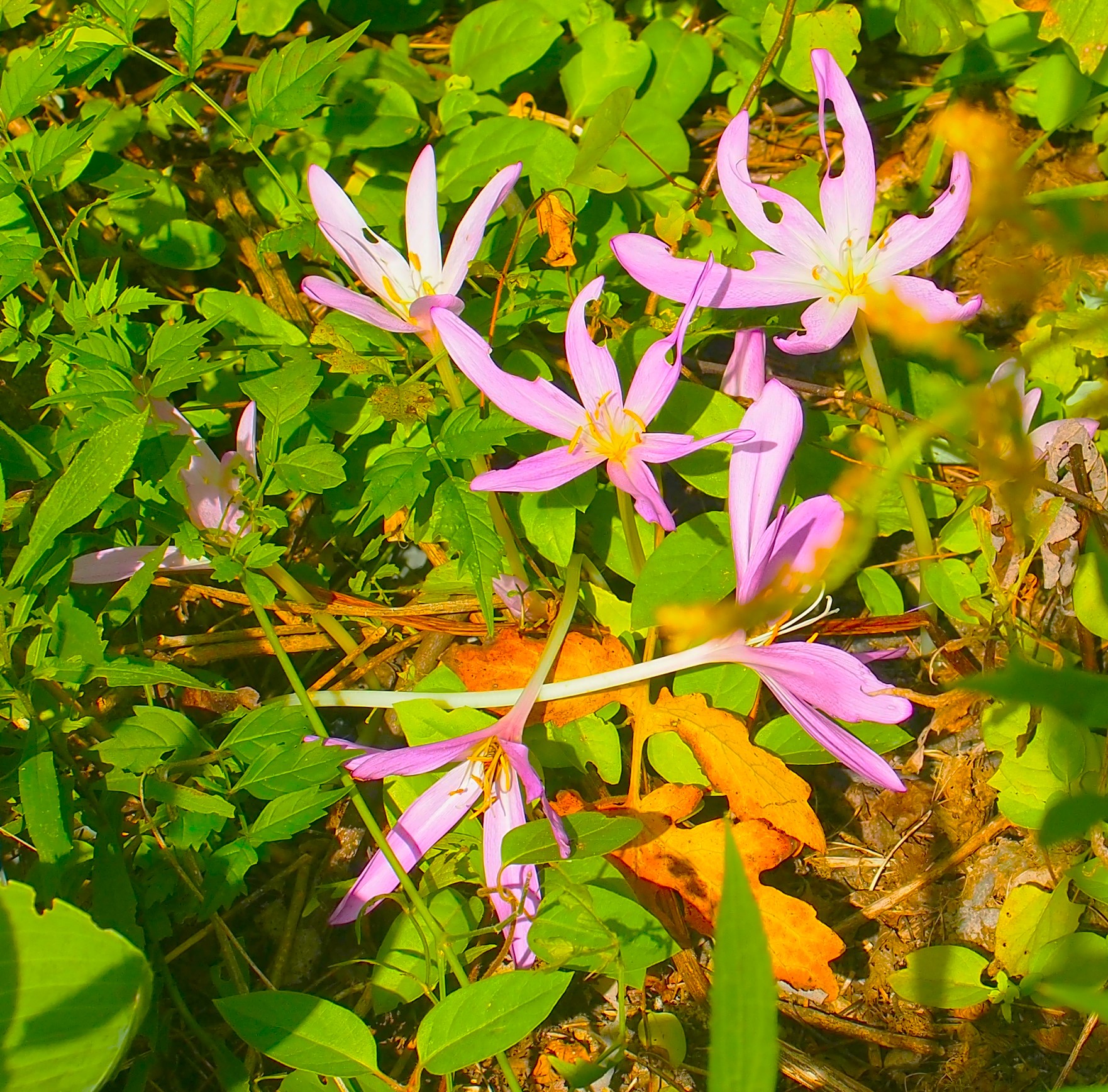
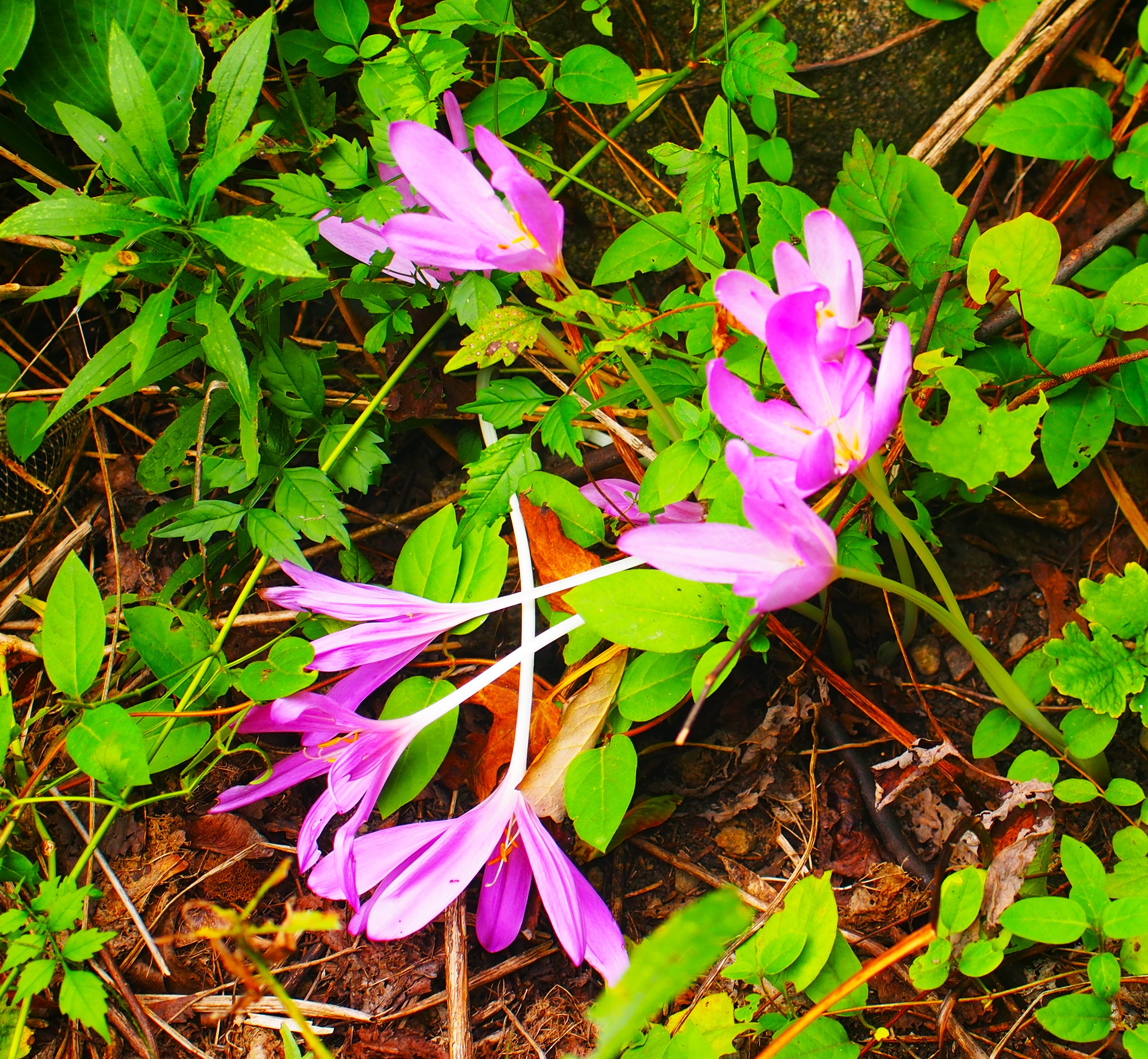
The Lilies have really been hit hard by the encroaching Winter. Picture 1 shows one bud and picture 2 shows two buds that have been waiting to Bloom but are still waiting. Rocky doesn't seem to have done much to them lately but this morning only one bud is showing.
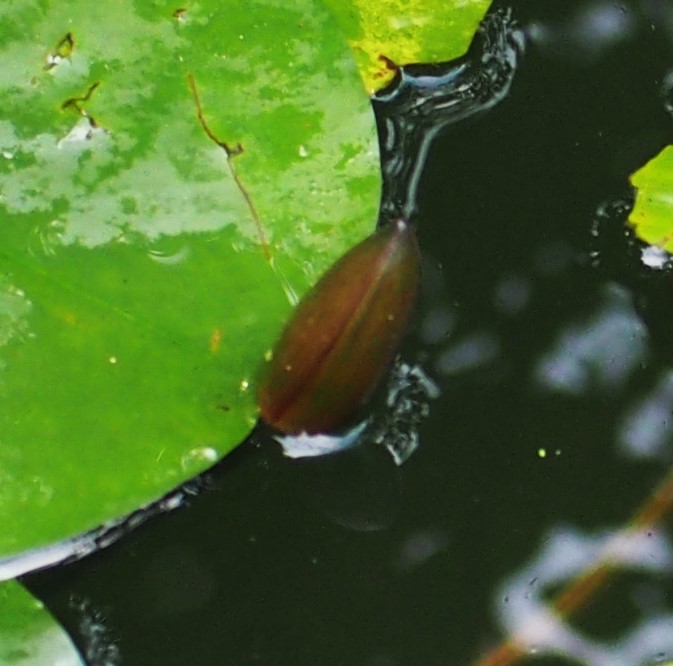
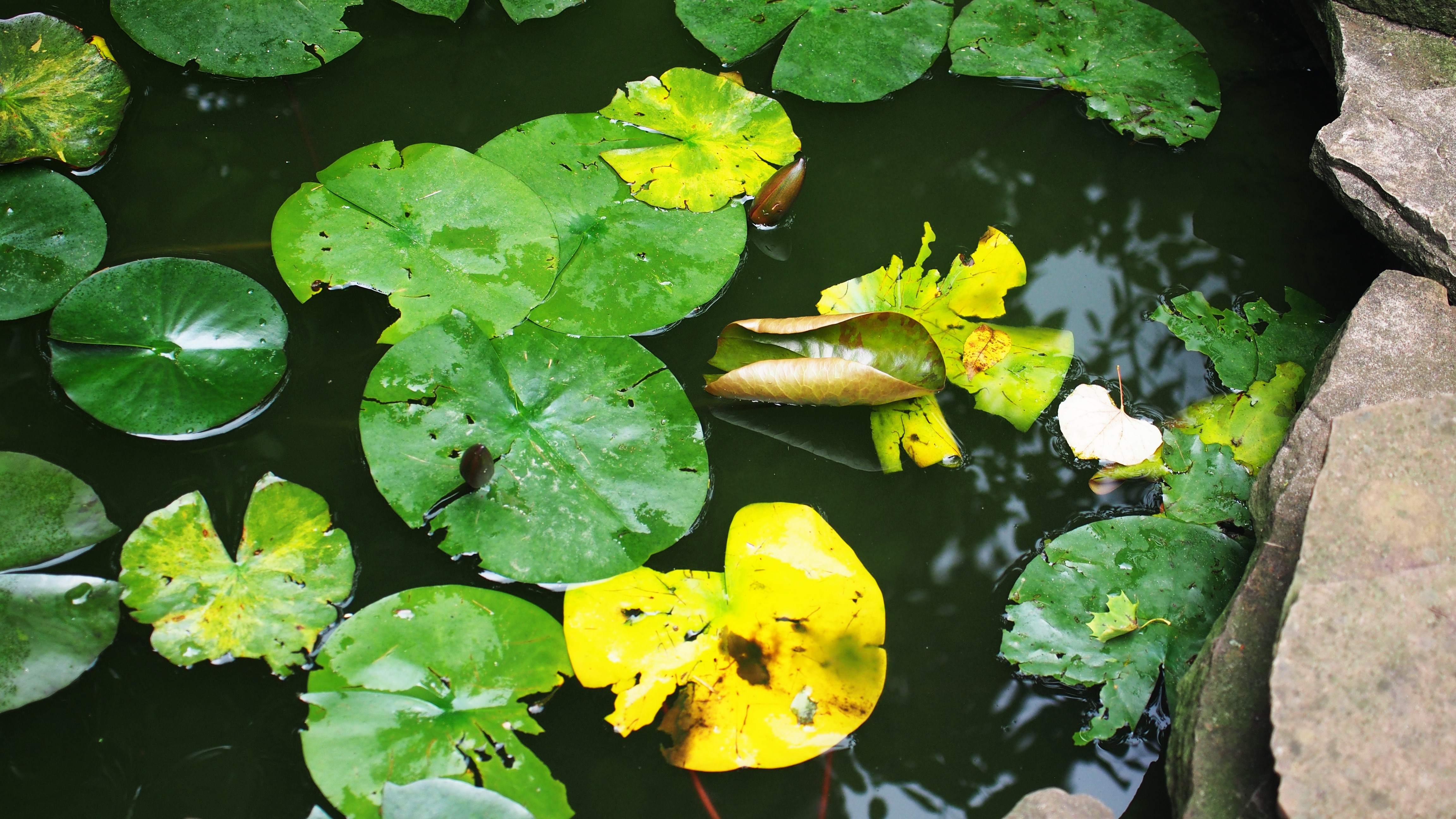
Now I'm just hopping from one thing to the other. The honeysuckle is folding up in the front yard. The cultivated Phlox is folding in the back yard. Even the wild Phlox in the side yard is beginning to flag.
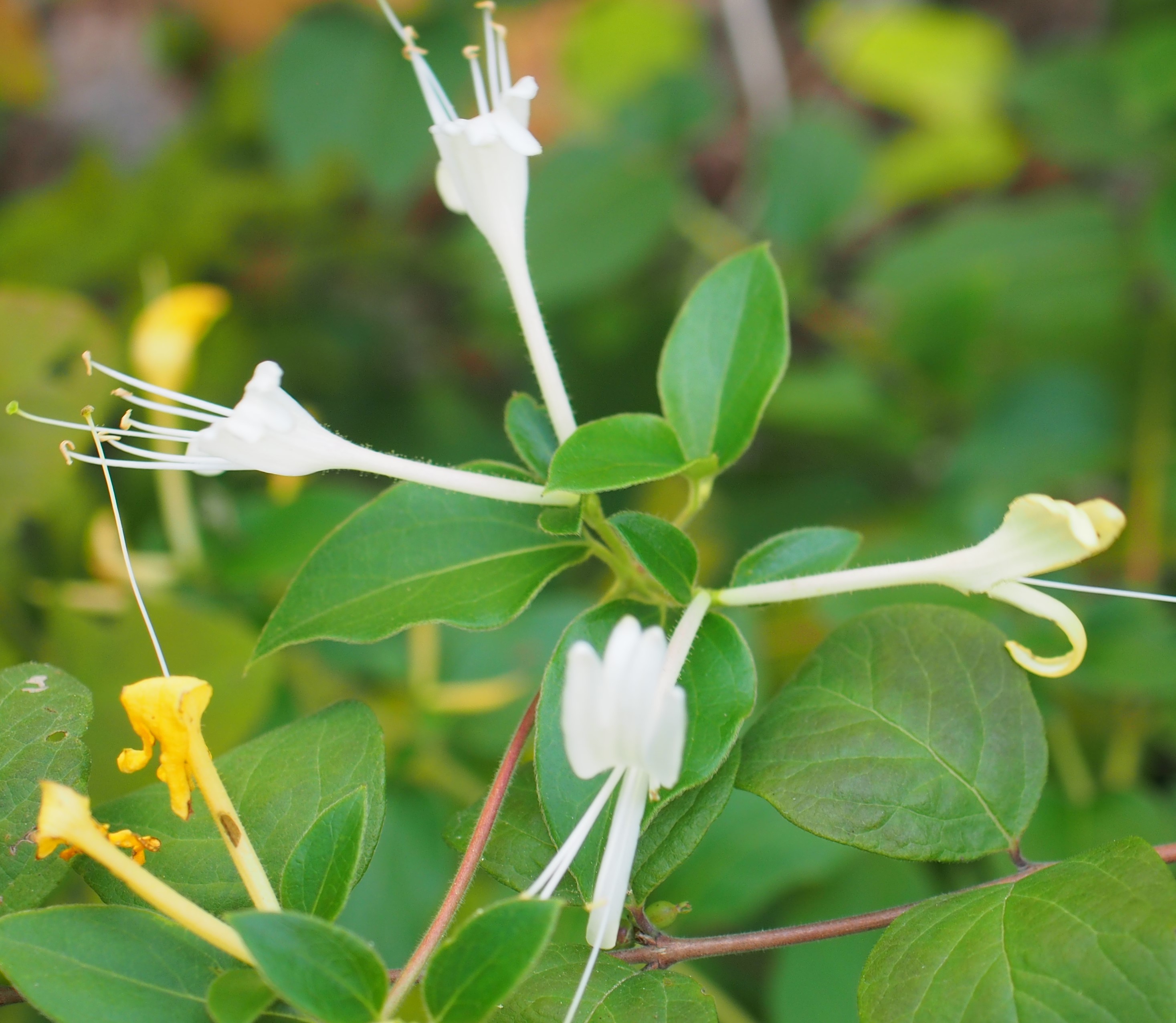
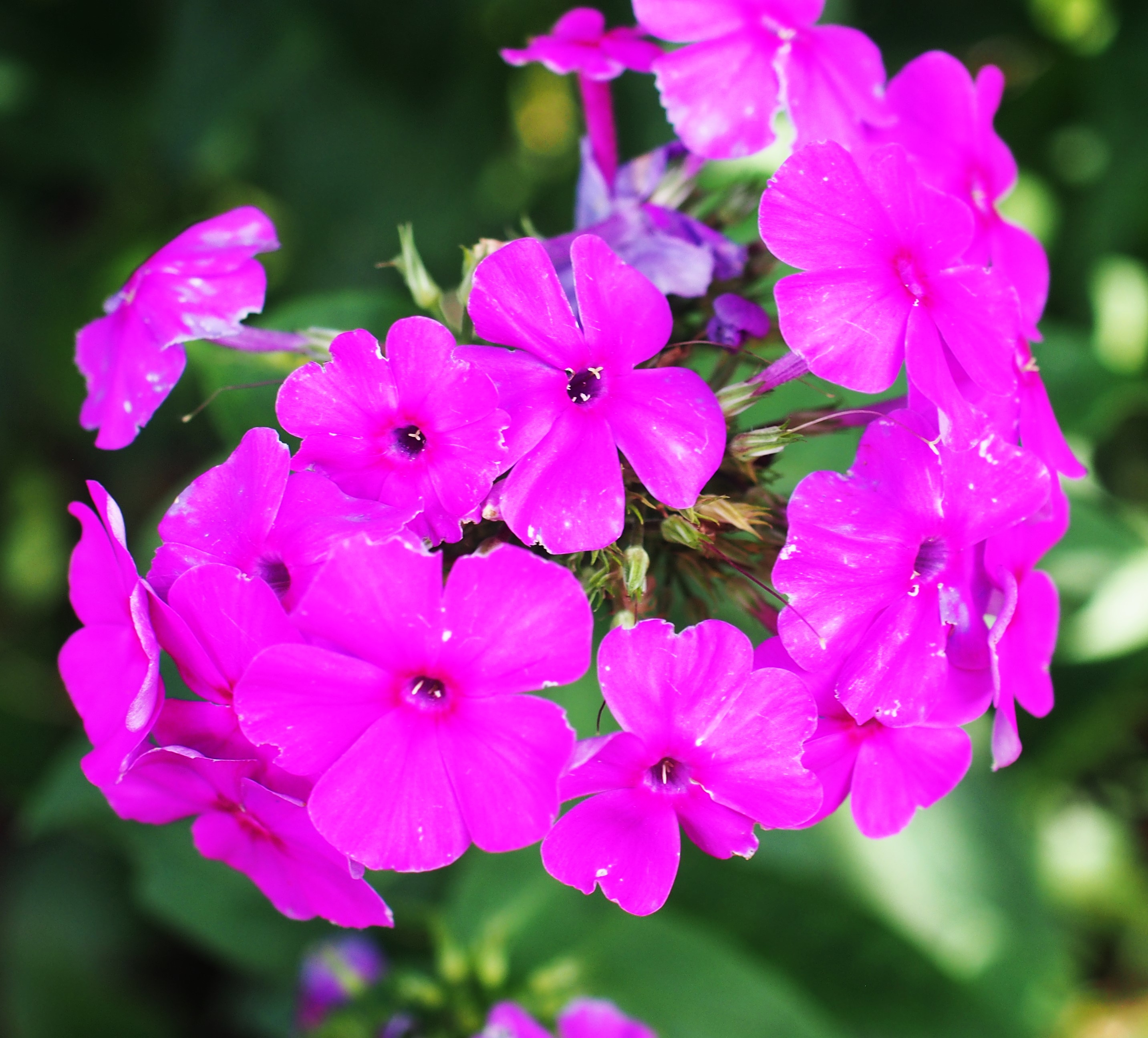

The Virginia Creeper got red overnight, it seems. Oak leaves are also turning. And on the path from front to back a new blossom appeared on the Cranesbill Geranium.
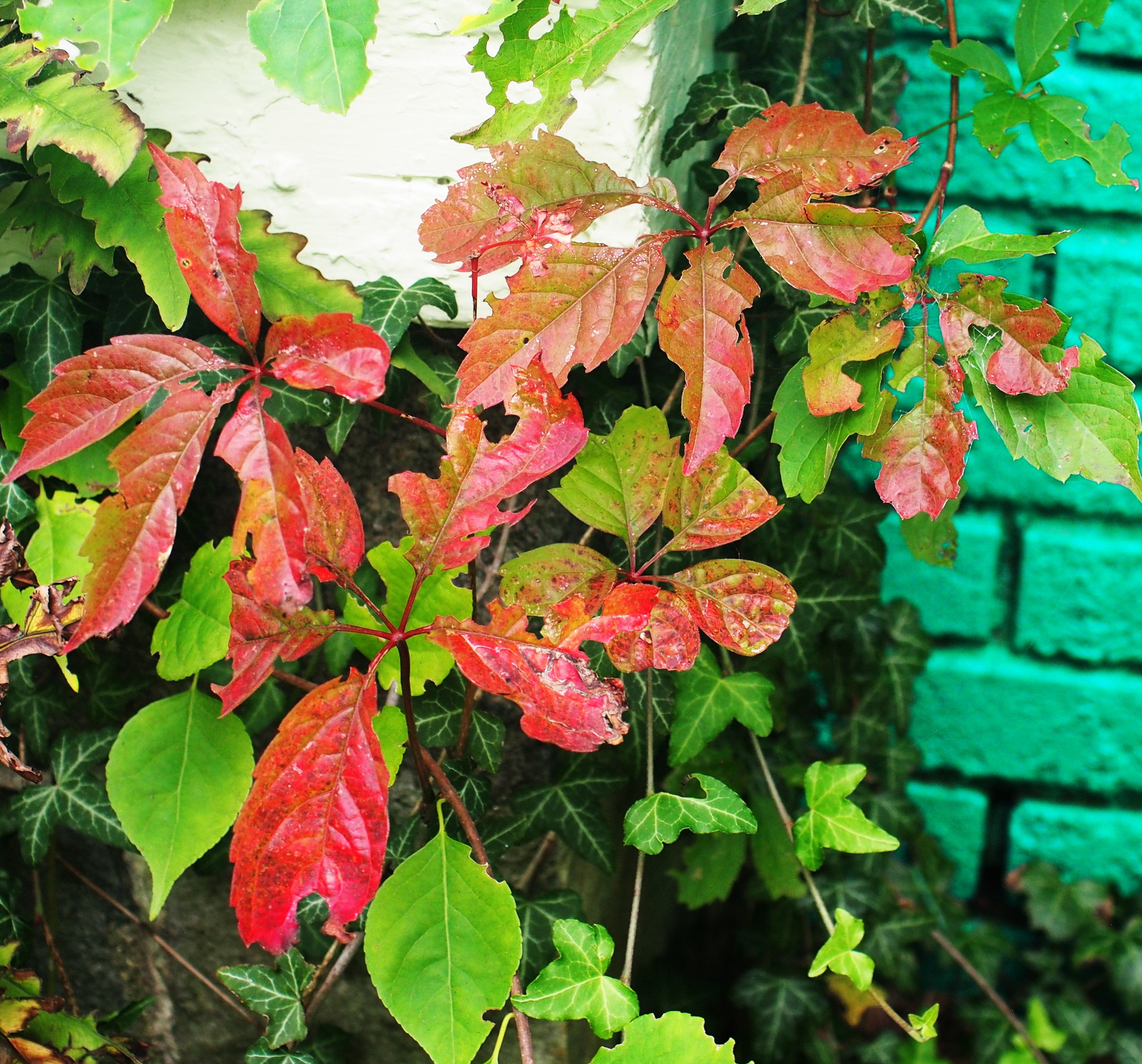
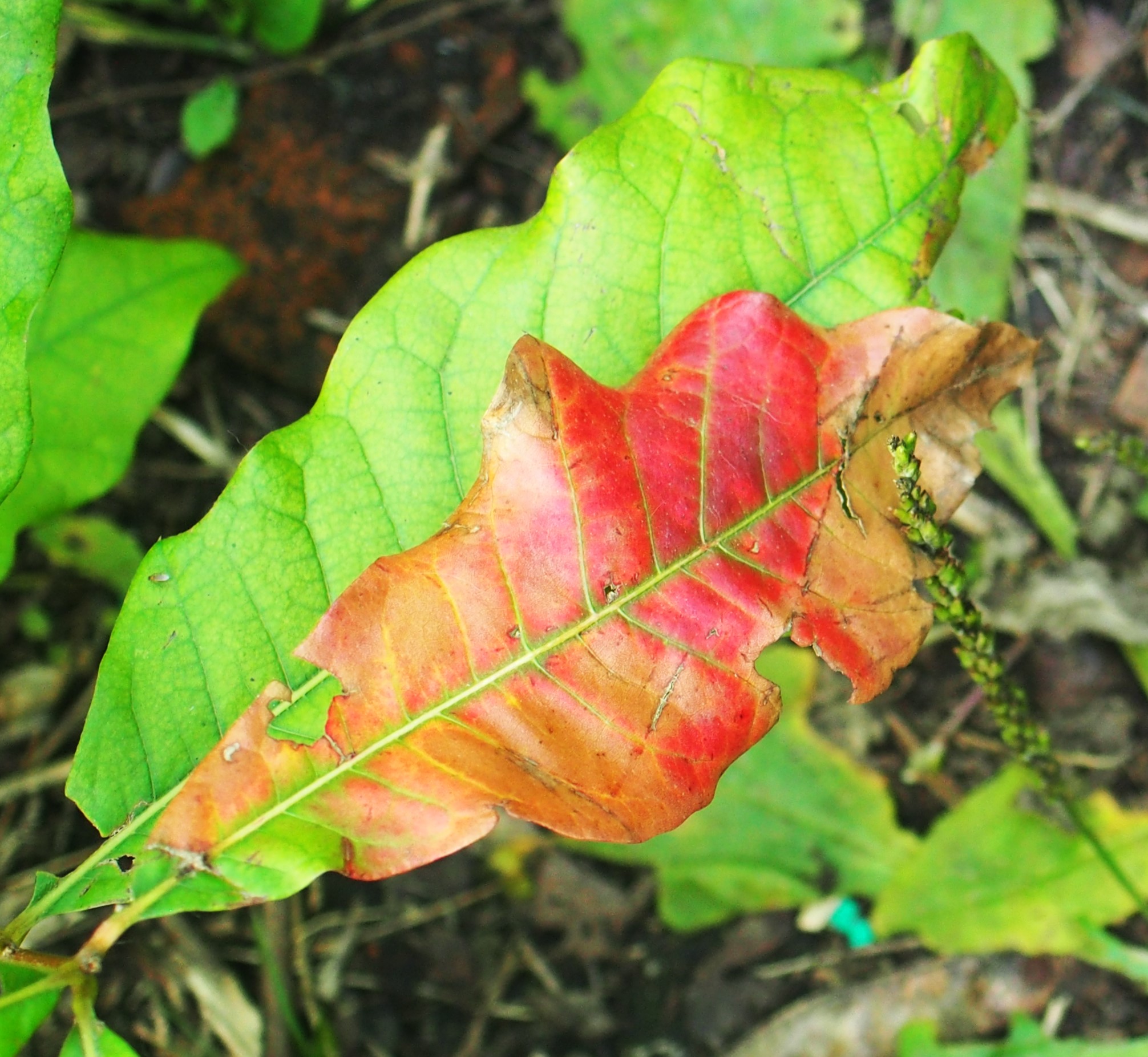

So we end the Flower Walk and look at the Spiders. First, here is one with a horribly large parasitic (probably Wasp) larva. Then a bright yellow tiny Spider. And a Cobweb Spider. It seems even the Spiders don't have the energy to show themselves. Number 4 needed @tigerbb to explain why it's so hard to identify the last spider - it's really only the moult left after the little Spider hatched from it!
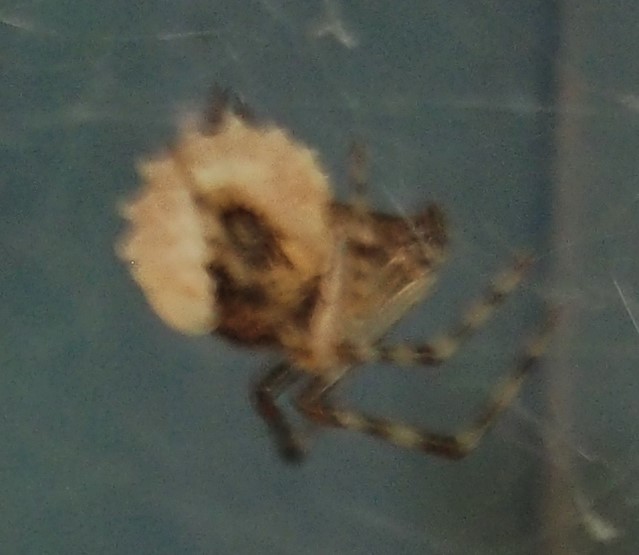

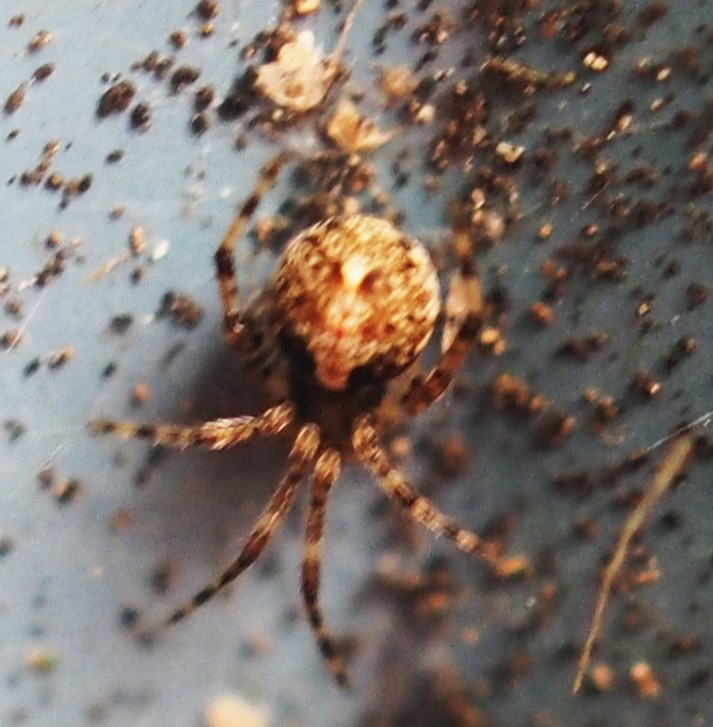
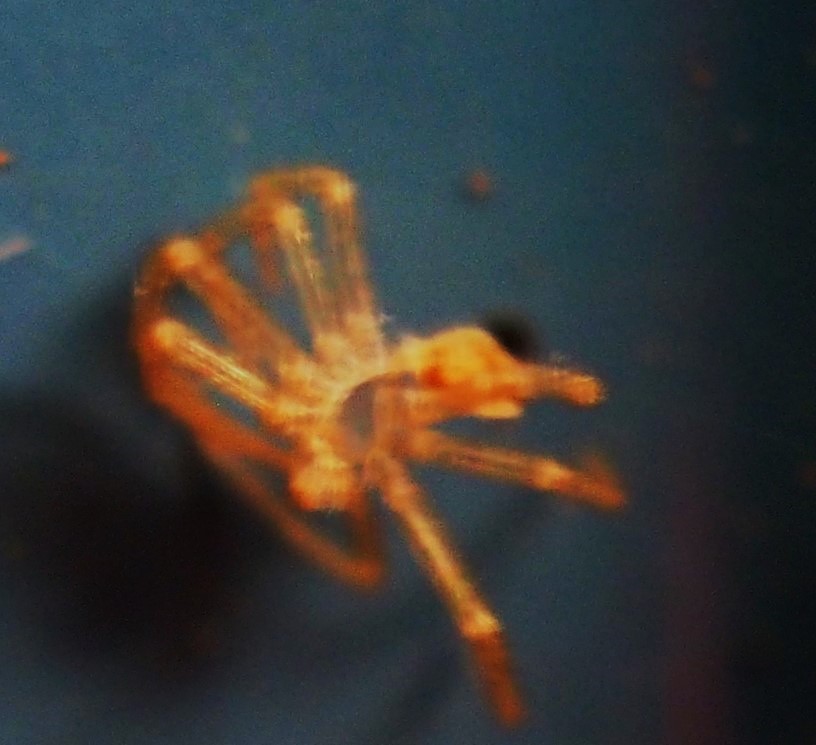
The Frogs haven't changed much in a week. But they're doing what they do to keep going - I hope they're fattening up for the winter fast. By the way, if you go to Google, and type in "how to tell the sex of a green frog" here is a little video to discuss how to tell a male from a female Green Frog. I just learned from googling "how to tell a male and a female green frog apart" a few helpful places to look for the clues you will need. So "google" the phrase above. In fact, number 1 is a male, number 2 a female, and number 3 is the male Tonguey.
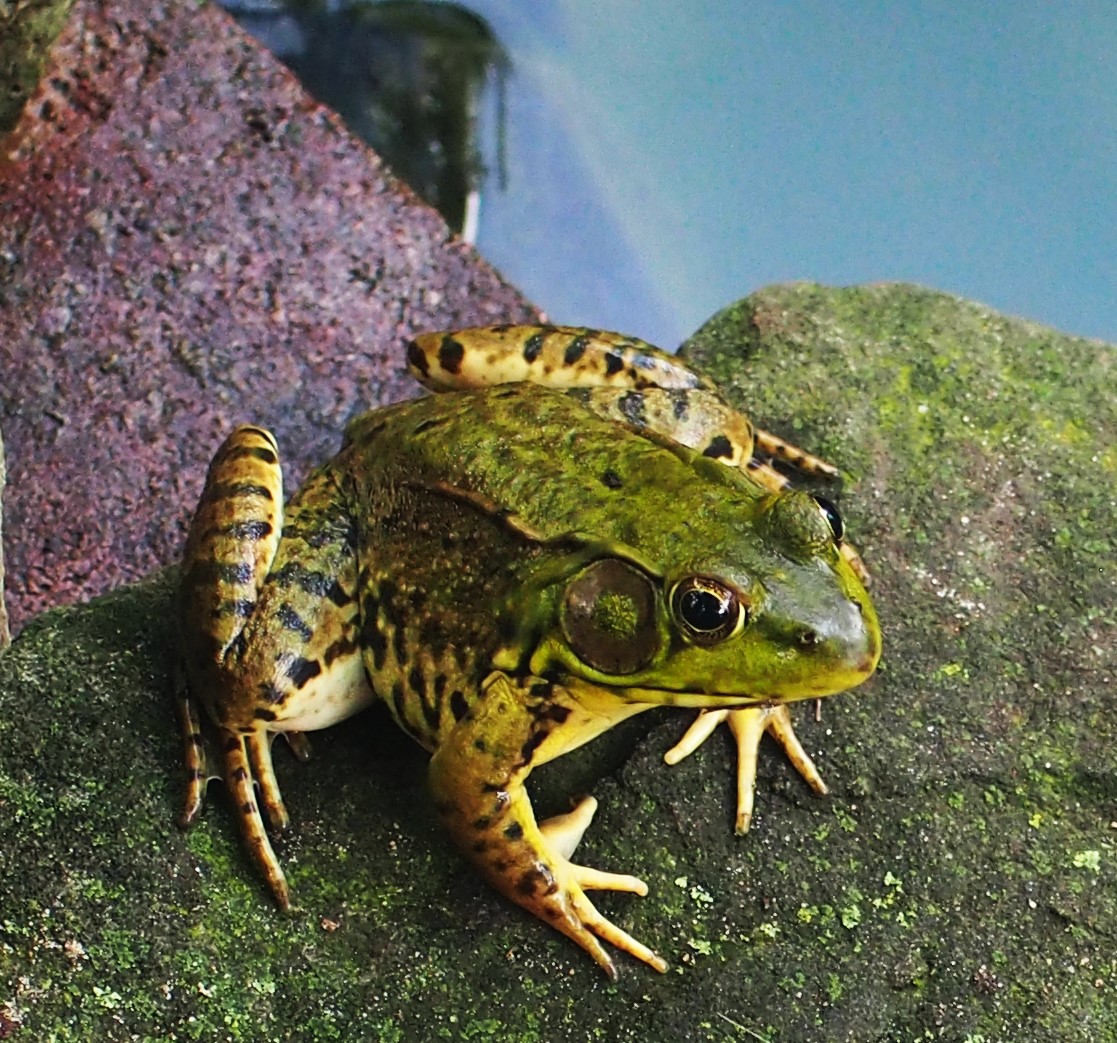


Besides these male and female Adult Frogs, we have size as a way to distinguish Frogs from each other. A month or so ago, I began to see some very tiny Froglets (at least two of them) - they might or might not be children of the already existing adult Frogs, and I think in a week or two I might be able to distinguish their sexes. This week I have also been looking back to last year's fall pictures, and in particular have been noticing last year's Tinies (picture 3). It really is déjà vu all over again. So let's look at some of this week's pictures. Picture 1 shows a full-sized male; Picture 2 shows TWO tinies. Remember that last week we were looking at some "tiny" frogs. I was wondering how these little guys developed in the Pond. It turns out that they might have been born from the mating
of two frogs many months or maybe years ago before they're old enough to have been brave enough to show themselves to us.

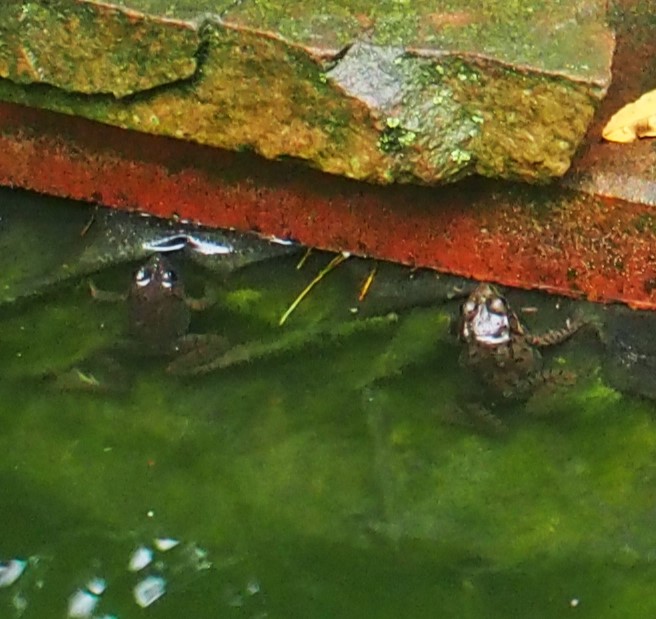
Here are some scenes of the Fishes. In both of these pictures, the Red Fantail has obviously grown a lot from when I bought her a couple of months ago. Meanwhile, in picture 1, Bunky (the large Black, Blue and Red Subunkin has much more red on him than he used to.
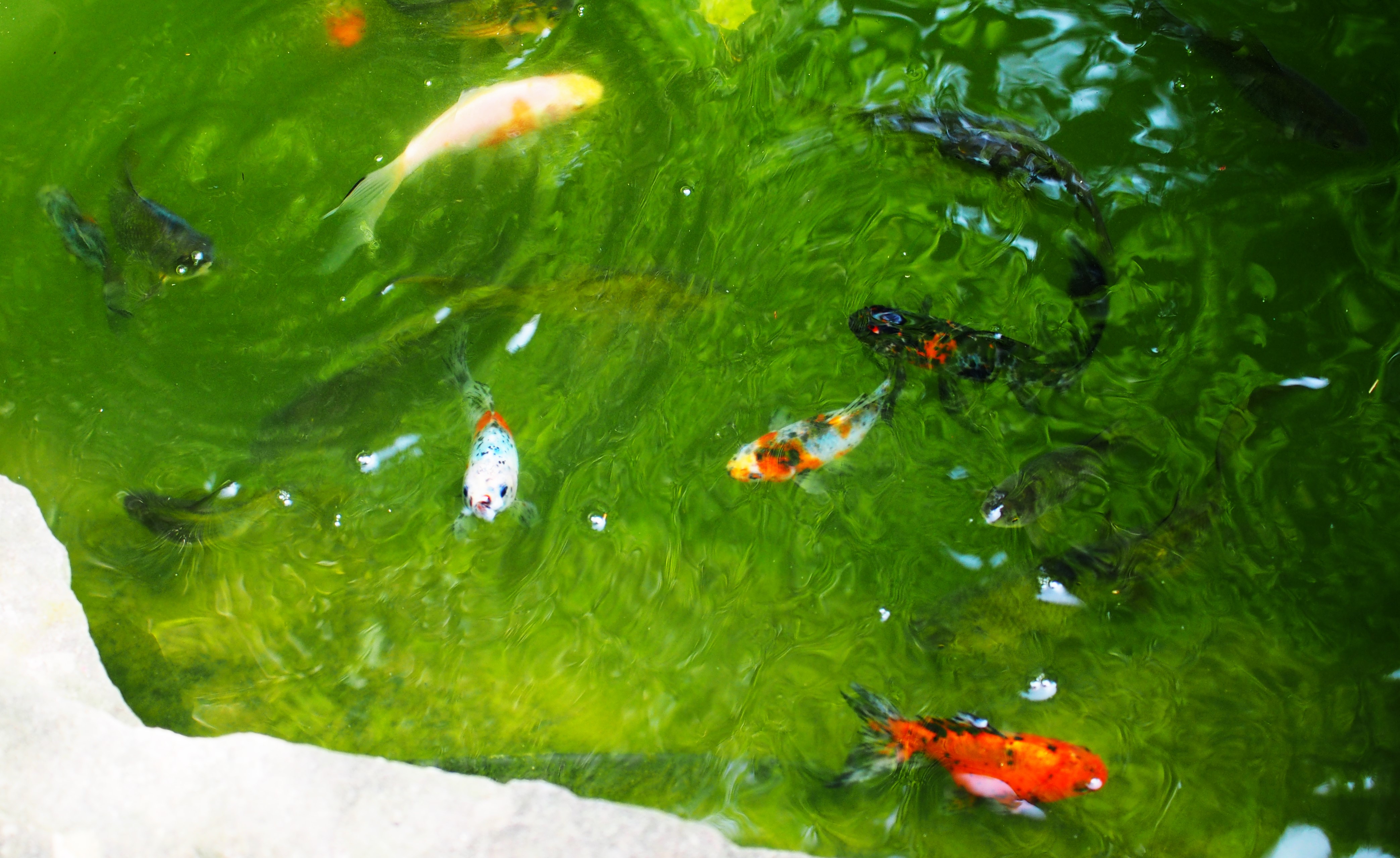
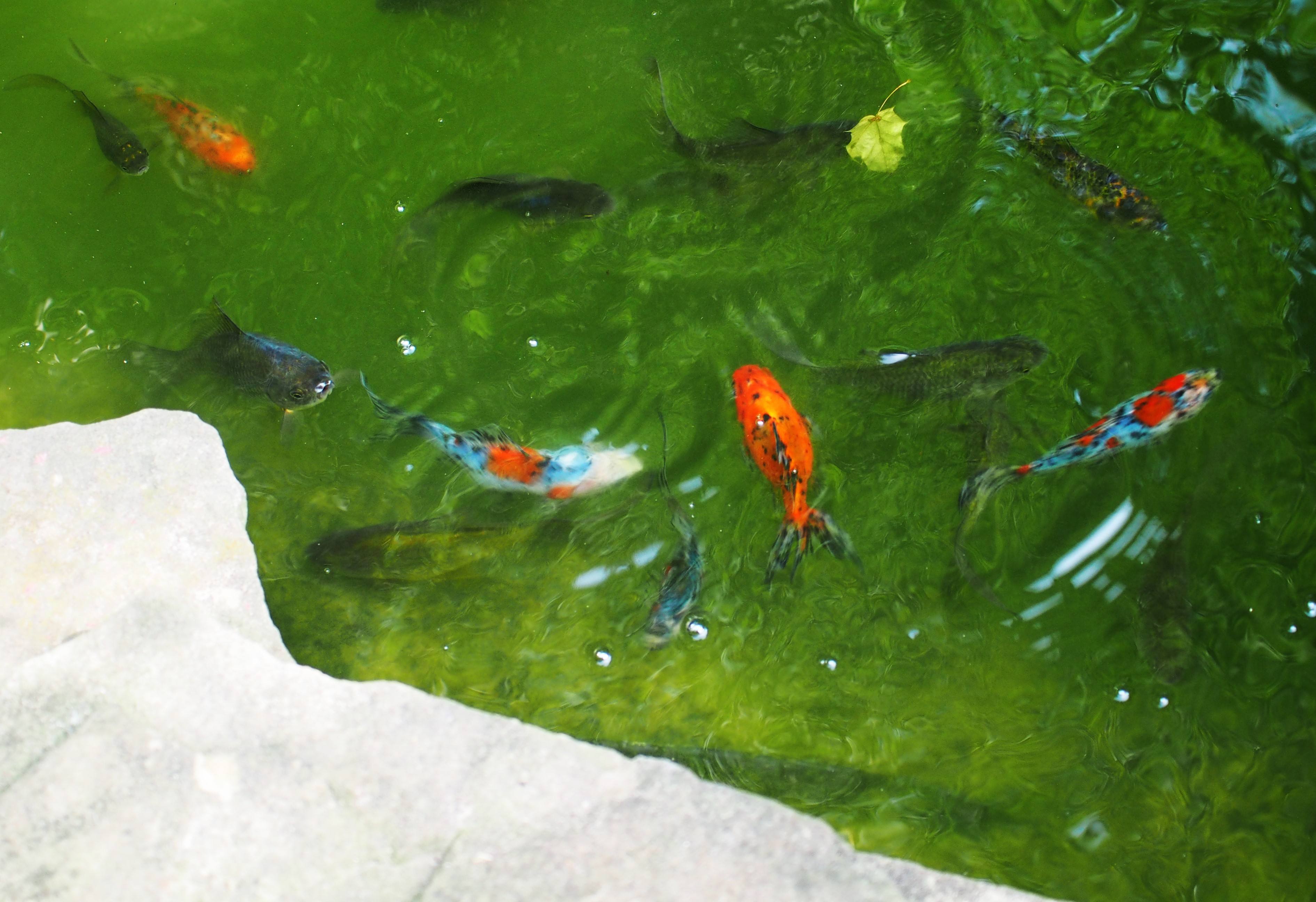
Well, here we are at the end of another week. It has been a wonderful lively Summer here in this yard. Again, let's hope we can keep our thoughts and our efforts on the beauty that exists and our part in preserving that beauty. Best wishes to all, not just here but everywhere. And not just now, but as long as we can participate in the healing.
Love, Martha
Back to September 24, 2023
Forward to October 8, 2023
Back to main menu
copyright Martha O'Kennon 2023







.jpg)

























































